http://commons.wikimedia.org/wiki/Claude_Monet
http://www.wikipaintings.org/en/claude-monet
Claude Monet (French pronunciation: [klod mɔnɛ/mɔne]) (14 November 1840 – 5 December 1926) was a founder of French impressionist painting, and the most consistent and prolific practitioner of the movement&s philosophy of expressing one&s perceptions before nature, especially as applied to plein-air landscape painting. The term Impressionism is derived from the title of his painting Impression, Sunrise (Impression, soleil levant).
Early life
Claude Monet was born on 14 November 1840 on the 5th floor of 45 rue Laffitte, in the 9th arrondissement of Paris. He was the second son of Claude Adolphe Monet and Louise Justine Aubrée Monet, both of them second-generation Parisians. On 20 May 1841, he was baptized in the local parish church, Notre-Dame-de-Lorette, as Oscar-Claude, but his parents called him simply Oscar. In 1845, his family moved to Le Havre in Normandy. His father wanted him to go into the family grocery business, but Monet wanted to become an artist. His mother was a singer.
On 1 April 1851, Monet entered Le Havre secondary school of the arts. Locals knew him well for his charcoal caricatures, which he would sell for ten to twenty francs. Monet also undertook his first drawing lessons from Jacques-François Ochard, a former student of Jacques-Louis David. On the beaches of Normandy in about 1856/1857, he met fellow artist Eugène Boudin, who became his mentor and taught him to use oil paints. Boudin taught Monet "en plein air" (outdoor) techniques for painting. Both received the influence of Johan Barthold Jongkind.
On 28 January 1857, his mother died. At the age of sixteen, he left school and went to live with his widowed childless aunt, Marie-Jeanne Lecadre.
Paris
On the Bank of the Seine, Bennecourt 1868, an early example of plein-air impressionism, in which a gestural and suggestive use of oil paint was presented as a finished work of art.
When Monet traveled to Paris to visit the Louvre, he witnessed painters copying from the old masters. Having brought his paints and other tools with him, he would instead go and sit by a window and paint what he saw. Monet was in Paris for several years and met other young painters who would become friends and fellow impressionists; among them was Édouard Manet.
In June 1861, Monet joined the First Regiment of African Light Cavalry in Algeria for a seven-year commitment, but, two years later, after he had contracted typhoid fever, his aunt intervened to get him out of the army if he agreed to complete an art course at an art school. It is possible that the Dutch painter Johan Barthold Jongkind, whom Monet knew, may have prompted his aunt on this matter. Disillusioned with the traditional art taught at art schools, in 1862 Monet became a student of Charles Gleyre in Paris, where he met Pierre-Auguste Renoir, Frédéric Bazille and Alfred Sisley. Together they shared new approaches to art, painting the effects of light en plein air with broken color and rapid brushstrokes, in what later came to be known as Impressionism.
Monet&s Camille or The Woman in the Green Dress (La femme à la robe verte), painted in 1866, brought him recognition and was one of many works featuring his future wife, Camille Doncieux; she was the model for the figures in Women in the Garden of the following year, as well as for On the Bank of the Seine, Bennecourt, 1868, pictured here. Camille became pregnant and gave birth to their first child, Jean in 1867.
Franco-Prussian War, Impressionism, and Argenteuil
After the outbreak of the Franco-Prussian War (19 July 1870), Monet took refuge in England in September 1870, where he studied the works of John Constable and Joseph Mallord William Turner, both of whose landscapes would serve to inspire Monet&s innovations in the study of color. In the spring of 1871, Monet&s works were refused authorisation for inclusion in the Royal Academy exhibition.
In May 1871, he left London to live in Zaandam, in the Netherlands, where he made twenty-five paintings (and the police suspected him of revolutionary activities). He also paid a first visit to nearby Amsterdam. In October or November 1871, he returned to France. Monet lived from December 1871 to 1878 at Argenteuil, a village on the right bank of the Seine river near Paris, and a popular Sunday-outing destination for Parisians, where he painted some of his best known works. In 1874, he briefly returned to Holland.
In 1872, he painted Impression, Sunrise (Impression, soleil levant) depicting a Le Havre port landscape. It hung in the first Impressionist exhibition in 1874 and is now displayed in the Musée Marmottan Monet in Paris. From the painting&s title, art critic Louis Leroy coined the term "Impressionism", which he intended as disparagement but which the Impressionists appropriated for themselves. Also in this exhibition was a painting titled Boulevard des Capucines, a painting of the boulevard done from the photographer Nadar&s apartment at no. 35. There were, however, two paintings by Monet of the boulevard: one is now in the Pushkin Museum in Moscow, the other in the Nelson-Atkins Museum of Art in Kansas City. It has never become clear which painting appeared in the groundbreaking 1874 exhibition, though more recently the Moscow picture has been favoured.
Monet and Camille Doncieux had married just before the war (28 June 1870) and after their excursion to London and Zaandam, they had moved to Argenteuil, in December 1871. It was during this time that Monet painted various works of modern life. Camille became ill in 1876. They had a second son, Michel, on 17 March 1878, (Jean was born in 1867). This second child weakened her already fading health. In that same year, Monet moved to the village of Vétheuil. On 5 September 1879, Camille Monet died of tuberculosis at the age of thirty-two; Monet painted her on her death bed.
Later life
After several difficult months following the death of Camille in September, 1879, a grief-stricken Monet (resolving never to be mired in poverty again) began in earnest to create some of his best paintings of the 19th century. During the early 1880s, Monet painted several groups of landscapes and seascapes in what he considered to be campaigns to document the French countryside. His extensive campaigns evolved into his series& paintings.
Camille Monet had become ill with tuberculosis in 1876. Pregnant with her second child, she gave birth to Michel Monet in March 1878. In 1878 the Monets temporarily moved into the home of Ernest Hoschedé, (1837–1891), a wealthy department store owner and patron of the arts. Both families then shared a house in Vétheuil during the summer. After her husband (Ernest Hoschedé) became bankrupt, and left in 1878 for Belgium, and after the death of Camille Monet in September 1879, and while Monet continued to live in the house in Vétheuil; Alice Hoschedé (1844-1911), helped Monet to raise his two sons, Jean and Michel, by taking them to Paris to live alongside her own six children. They were Blanche Hoschedé Monet, (she eventually married Jean Monet), Germaine, Suzanne Hoschedé, Marthe, Jean-Pierre, and Jacques. In the spring of 1880, Alice Hoschedé and all the children left Paris and rejoined Monet still living in the house in Vétheuil. In 1881, all of them moved to Poissy, which Monet hated. In April 1883, looking out the window of the little train between Vernon and Gasny, he discovered Giverny. They then moved to Vernon, then to a house in Giverny in Normandy, where he planted a large garden and where he painted for much of the rest of his life. Following the death of her estranged husband, Alice Hoschedé married Claude Monet in 1892.
Giverny
At the beginning of May 1883, Monet and his large family rented a house and 2 acres (8,100 m2) from a local landowner. The house was situated near the main road between the towns of Vernon and Gasny at Giverny. There was a barn that doubled as a painting studio, orchards and a small garden. The house was close enough to the local schools for the children to attend and the surrounding landscape offered many suitable motifs for Monet&s work. The family worked and built up the gardens and Monet&s fortunes began to change for the better as his dealer Paul Durand-Ruel had increasing success in selling his paintings. By November 1890, Monet was prosperous enough to buy the house, the surrounding buildings and the land for his gardens. During the 1890s, Monet built a greenhouse and a second studio, a spacious building well lit with skylights. Beginning in the 1880s and 1890s through the end of his life in 1926, Monet worked on "series" paintings, in which a subject was depicted in varying light and weather conditions. His first series exhibited as such was of Haystacks, painted from different points of view and at different times of the day. Fifteen of the paintings were exhibited at the Galerie Durand-Ruel in 1891. He later produced several series of paintings including: Rouen Cathedral, Poplars, the Parliament, Mornings on the Seine, and the Water Lilies that were painted on his property at Giverny.
Monet was fond of painting controlled nature: his own gardens in Giverny, with its water lilies, pond, and bridge. He also painted up and down the banks of the Seine, producing paintings such as Break-up of the ice on the Seine. He wrote daily instructions to his gardener, precise designs and layouts for plantings, and invoices for his floral purchases and his collection of botany books. As Monet&s wealth grew, his garden evolved. He remained its architect, even after he hired seven gardeners.
Between 1883 and 1908, Monet traveled to the Mediterranean, where he painted landmarks, landscapes, and seascapes, such as Bordighera. He painted an important series of paintings in Venice, Italy, and in London he painted two important series—views of Parliament and views of Charing Cross Bridge. His second wife, Alice, died in 1911 and his oldest son Jean, who had married Alice&s daughter Blanche, Monet&s particular favourite, died in 1914. After Alice died, Blanche looked after and cared for Monet. It was during this time that Monet began to develop the first signs of cataracts.
During World War I, in which his younger son Michel served and his friend and admirer Clemenceau led the French nation, Monet painted a series of weeping willow trees as homage to the French fallen soldiers. In 1923, he underwent two operations to remove his cataracts: the paintings done while the cataracts affected his vision have a general reddish tone, which is characteristic of the vision of cataract victims. It may also be that after surgery he was able to see certain ultraviolet wavelengths of light that are normally excluded by the lens of the eye; this may have had an effect on the colors he perceived. After his operations he even repainted some of these paintings, with bluer water lilies than before.
Death
Monet died of lung cancer on 5 December 1926 at the age of 86 and is buried in the Giverny church cemetery. Monet had insisted that the occasion be simple; thus only about fifty people attended the ceremony.
His home, garden and waterlily pond were bequeathed by his son Michel, his only heir, to the French Academy of Fine Arts (part of the Institut de France) in 1966. Through the Fondation Claude Monet, the house and gardens were opened for visits in 1980, following restoration. In addition to souvenirs of Monet and other objects of his life, the house contains his collection of Japanese woodcut prints. The house is one of the two main attractions of Giverny, which hosts tourists from all over the world.
Posthumous sales
In 2004, London, the Parliament, Effects of Sun in the Fog (Londres, le Parlement, trouée de soleil dans le brouillard) (1904), sold for US$20.1 million. In 2006, the journal Proceedings of the Royal Society published a paper providing evidence that these were painted in situ at St Thomas& Hospital over the river Thames.
Falaises près de Dieppe (Cliffs near Dieppe) has been stolen on two separate occasions: once in 1998 (in which the museum&s curator was convicted of the theft and jailed for five years and two months along with two accomplices) and most recently in August 2007. It was recovered in June 2008.
Monet&s Le Pont du chemin de fer à Argenteuil, an 1873 painting of a railway bridge spanning the Seine near Paris, was bought by an anonymous telephone bidder for a record $ 41.4 million at Christie&s auction in New York on 6 May 2008. The previous record for his painting stood at $ 36.5 million. Just a few weeks later, Le bassin aux nymphéas (from the water lilies series) sold at Christie&s 24 June 2008 auction in London, lot 19, for £36,500,000 ($71,892,376.34) (hammer price) or £40,921,250 ($80,451,178) with fees, nearly doubling the record for the artist and representing one of the top 20 highest prices paid for a painting at the time.
Monet forgery discovered
On February 14, 2008, the Wallraf-Richartz Museum in Cologne, Germany announced that On the Banks of the Seine by Port-Villez, attributed to Claude Monet, was a forgery. The discovery was made when the painting was examined by restorers prior to an upcoming Impressionism exhibition. X-ray and infrared testing revealed that a "colorless substance" had been applied to the canvas to make it appear older. The picture was acquired by the museum in 1954. The museum, which will keep the forgery, still has five authentic Monet paintings in its collection.
(1)Camille (also known as The Woman in a Green Dress), 1866. Realism.

Original Size
(2)Women in the garden, 1866. Impressionism.
Monet&s technique of “en plein air” painting was hard at work on this painting. Because it necessitated that he work from the same point of view as he painted, he dug a trench for the bottom half of the painting to sit in while he painted the top, due to its large size (it measures 100 by 81 inches). His model for the women of the painting was Camille Doncieux, who would later become his wife, bearing him two sons. To finish the dresses in the most fashionable style, Monet used magazine illustrations to render the clothing.

Original Size
(3)River Scene at Bennecourt, 1868, Art Institute of Chicago, Chicago, IL, USA. Impressionism.

Original Size
(4)Impression, sunrise, 1873. Impressionism.
When Impression, Sunrise hung at its first exhibition in 1874, art critic Louis Leroy derisively used the term “Impressionistic,” from the title of this painting, to describe Monet&s works. This term was quickly adopted by what were soon to be known as the Impressionist painters, and the exhibition which included other works by Impressionist artists, was from then on referred to as the “Impressionist Exhibition.” This painting was later stolen in 1985 from the Musee Marmottan Monet in Paris, but was recovered undamaged in 1990, and was put back on display at the museum in 1991.

Original Size
(5)Boulevard of Capucines, Start Date: 1873, Completion Date: 1874, Nelson-Atkins Museum of Art, Kansas City, MO, USA. Impressionism.
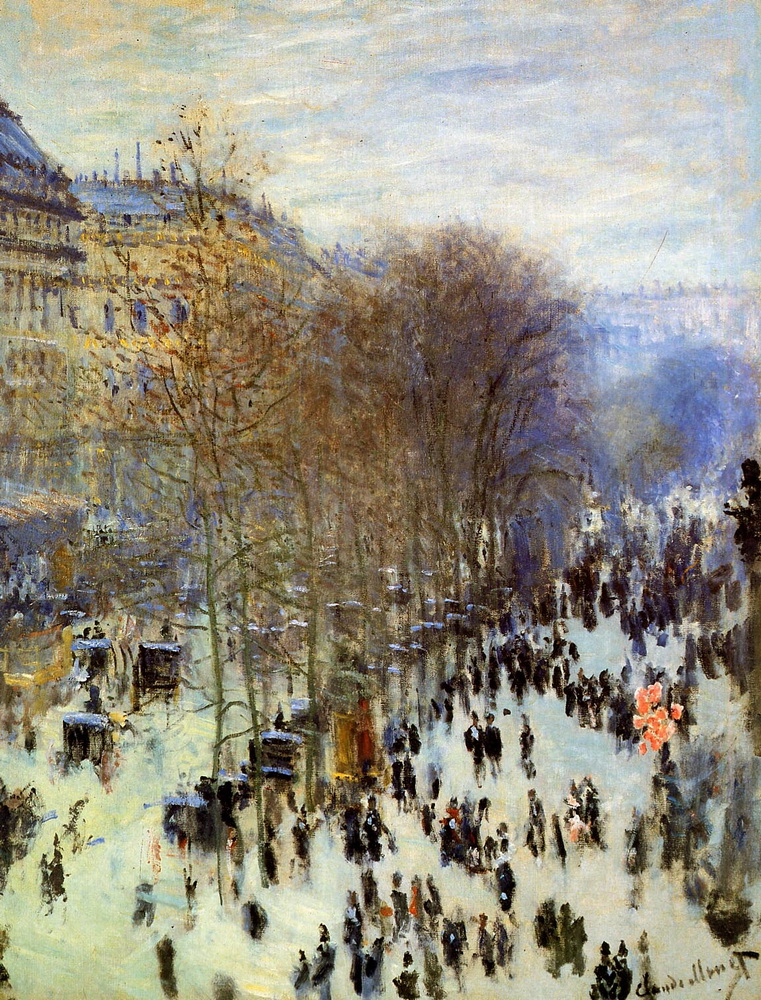
Original Size
(6)Garden at Sainte-Adresse, 1867. Impressionism.

Original Size
(7)The Boardwalk on the Beach at Trouville, 1870. Impressionism.

Original Size
(8)Portrait of Madame Gaudibert, 1868. Realism.
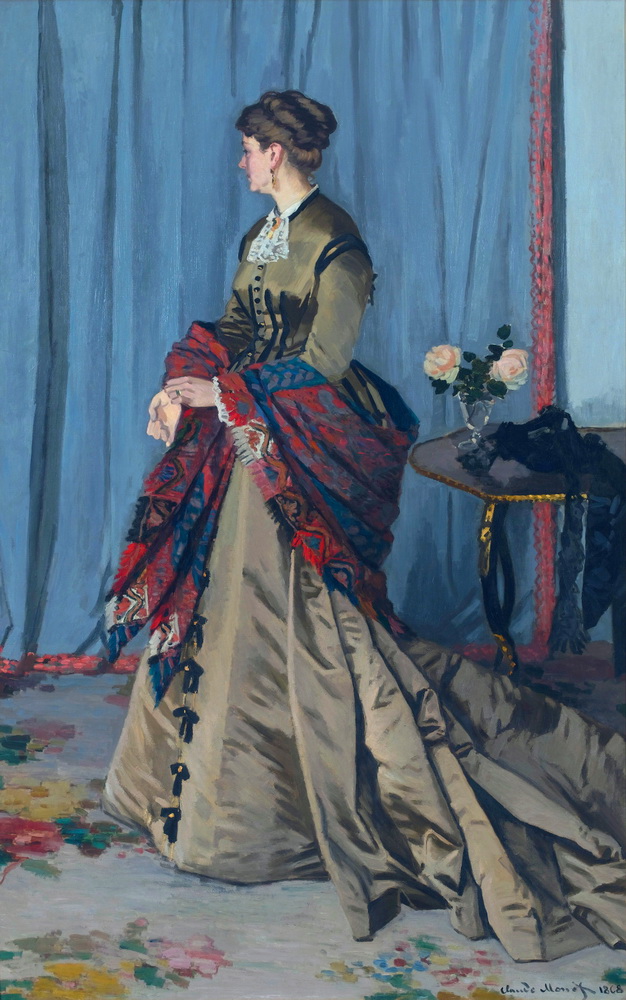
Original Size
(9)Argenteuil, The Seine, 1872. Impressionism.

(10)Still Life with Melon, 1872. Impressionism.

(11)The Tea Set, 1872. Impressionism.

(12)The Sheltered Path, 1873. Impressionism.
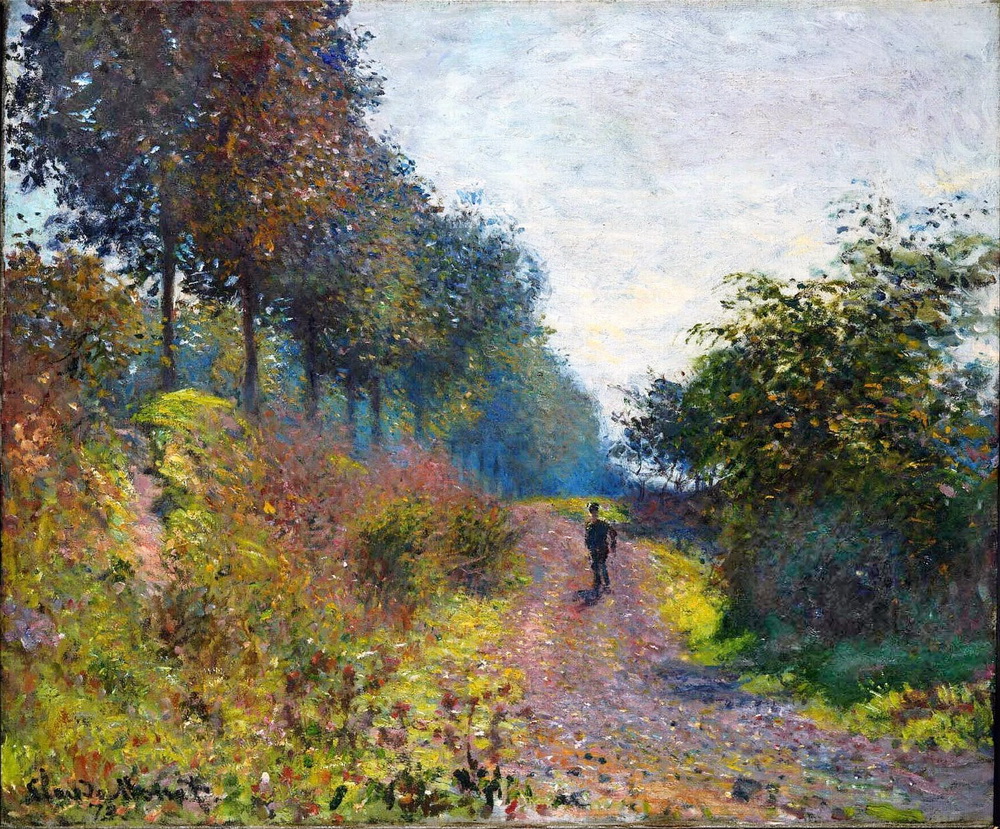
Original Size
(13)Wild Poppies, near Argenteuil, 1873. Impressionism.
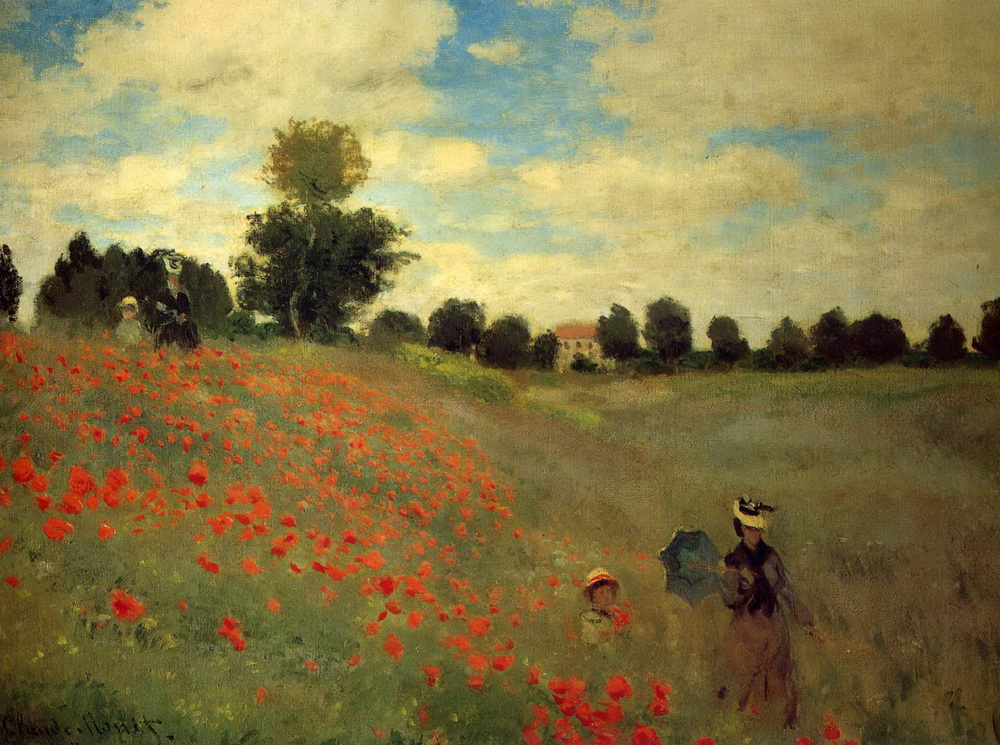
Original Size
(14)Snow at Argenteuil, 1875. Impressionism.

Original Size
(15)The Artist&s Family in the Garden, 1875. Impressionism.
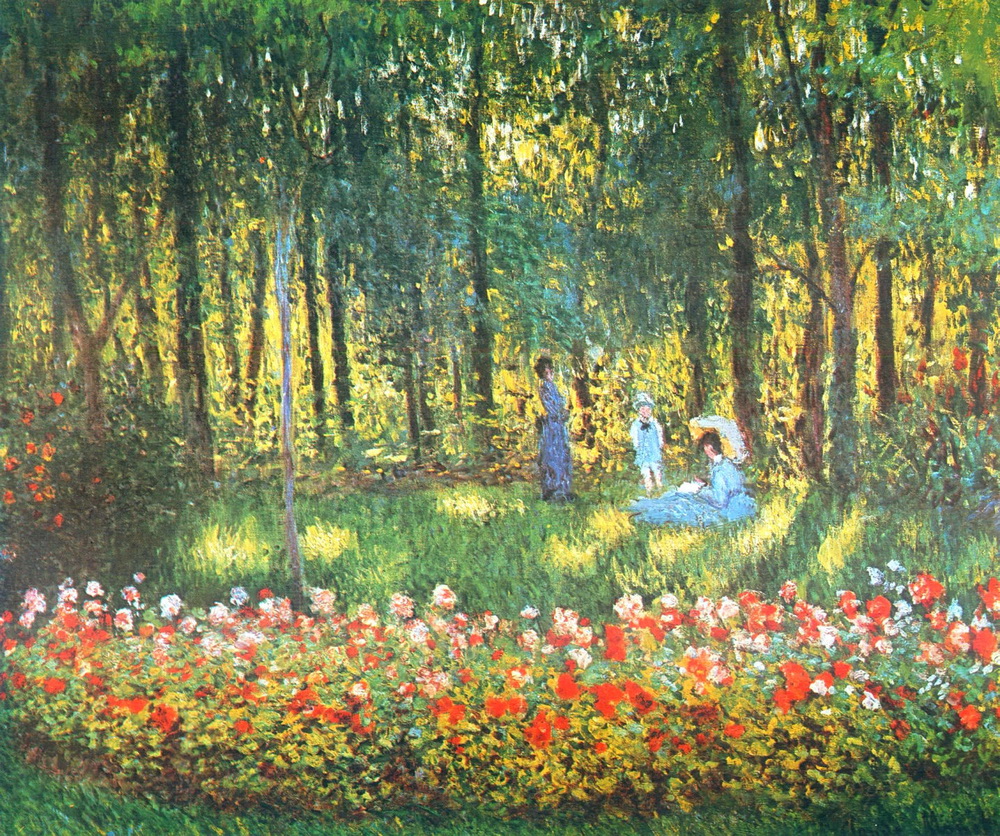
Original Size
(16)The Small Arm of the Seine at Argenteuil, 1876. Impressionism.
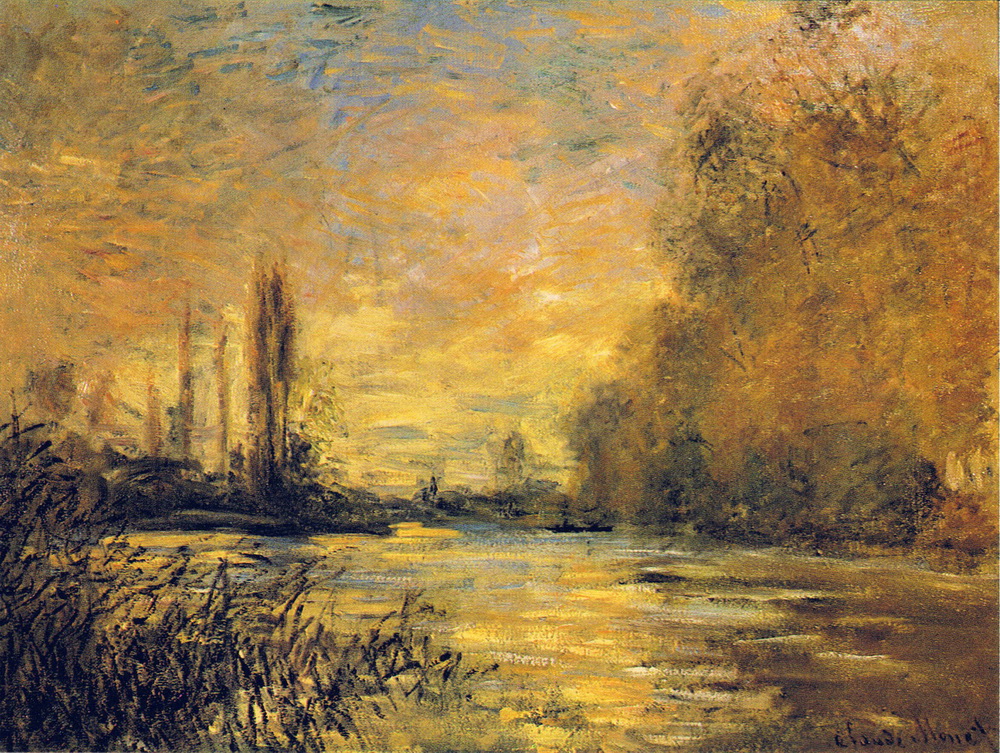
Original Size
(17)Vetheuil, 1880. Impressionism.
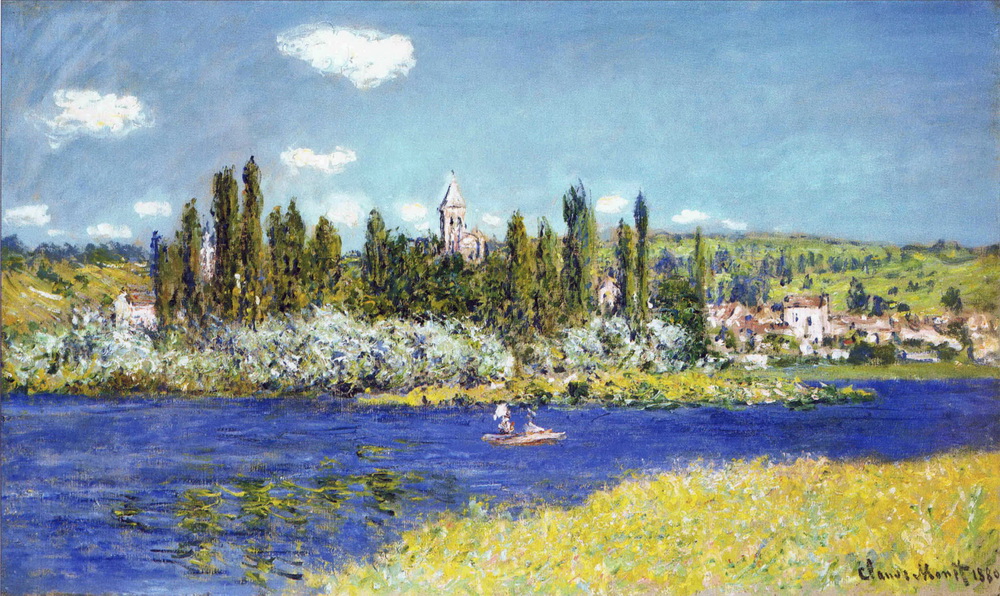
Original Size
(18)The Willows, 1880. Impressionism.
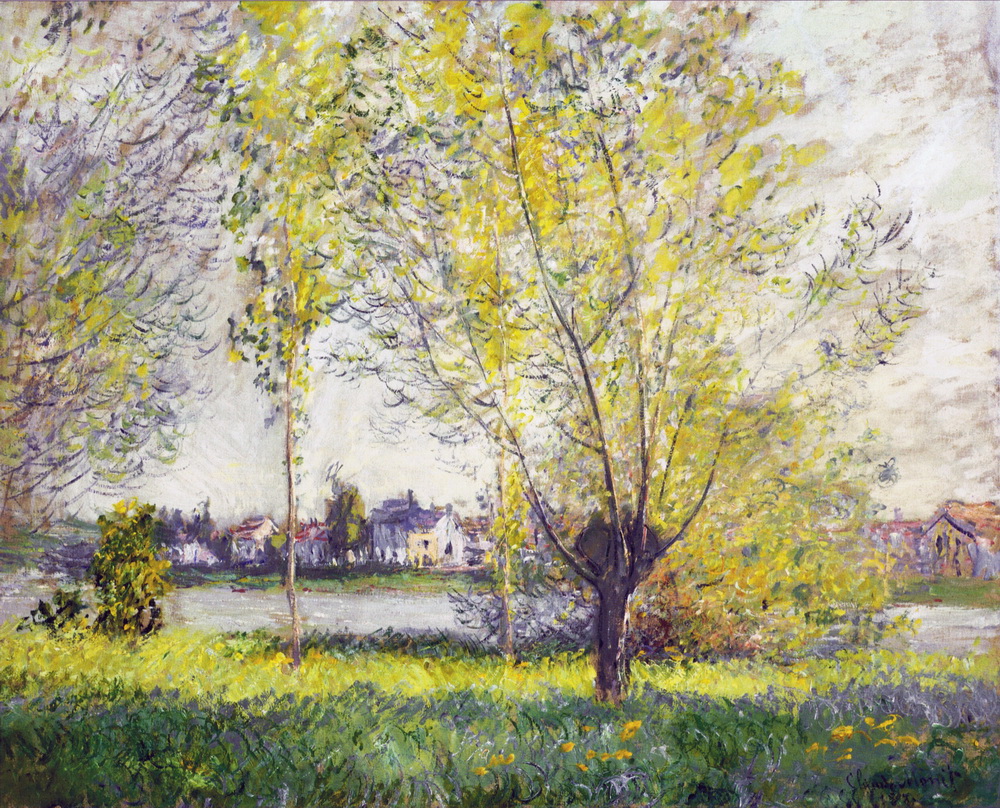
Original Size
(19)Vetheuil, Ice Floes, 1881. Impressionism.
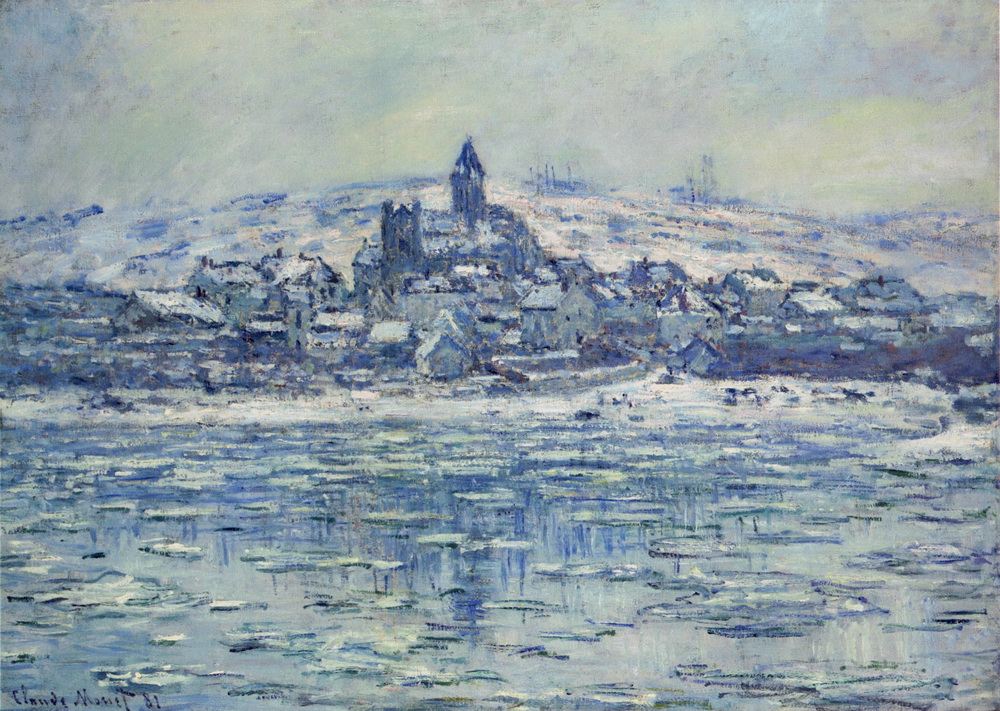
Original Size
(20)Cliffs and Sailboats at Pourville, 1882, Private Collection. Impressionism.

(21)Low Tide at Pourville 02, 1882. Impressionism.
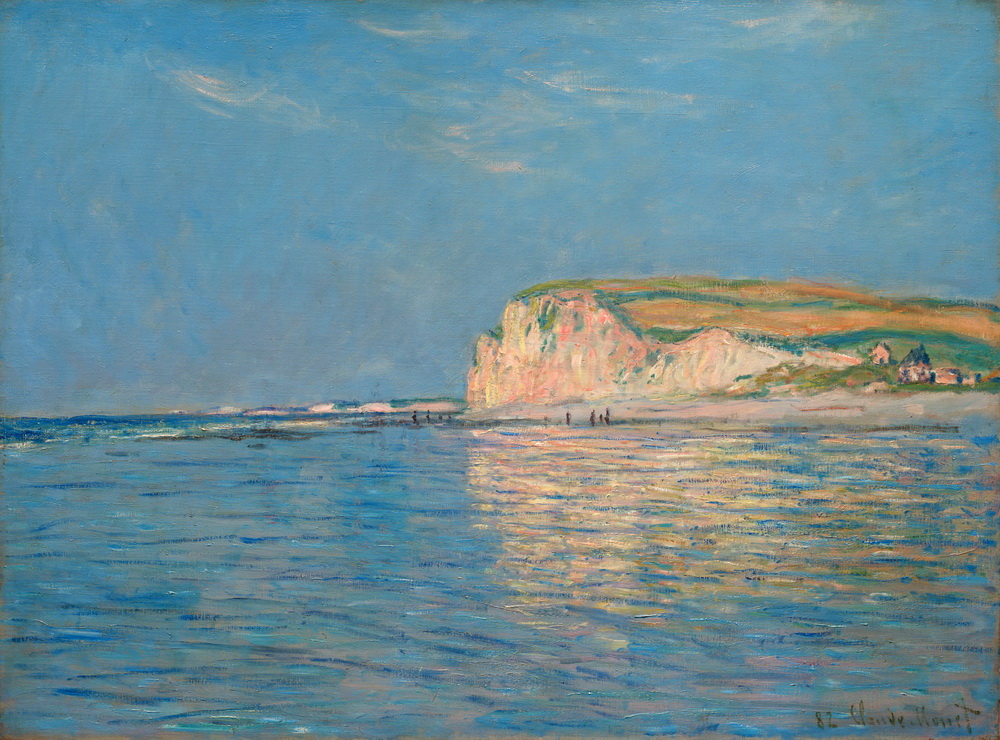
Original Size
(22)Clifftop Walk at Pourville, 1882. Impressionism.
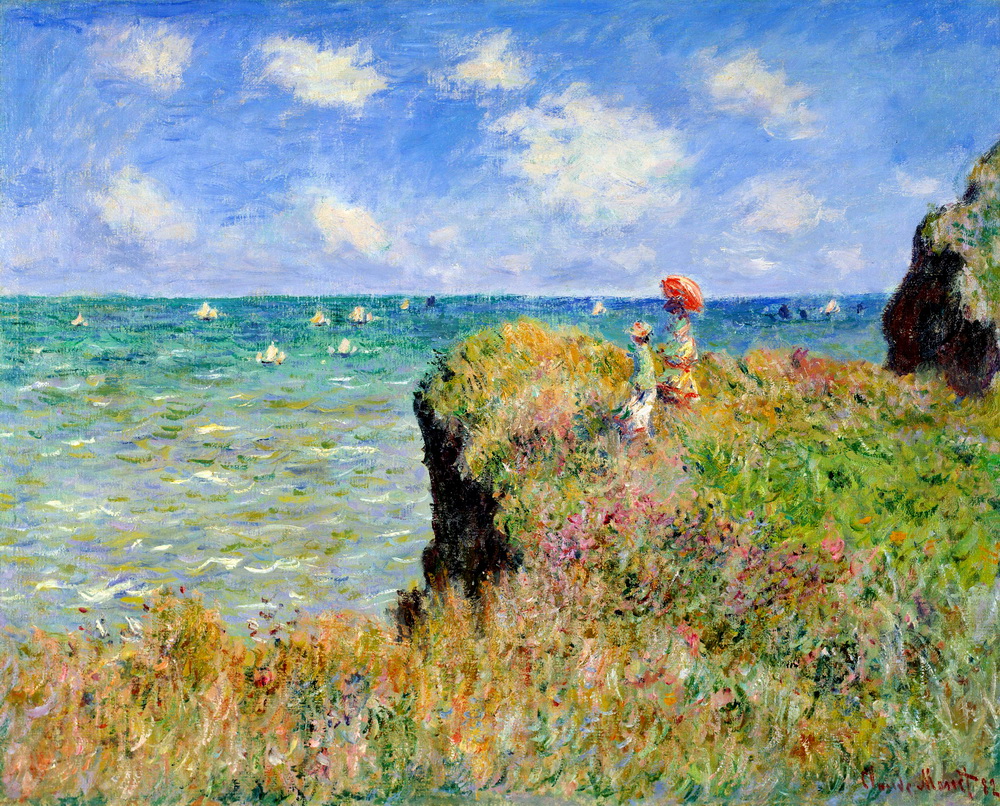
Original Size
(23)View of the Church at Vernon, 1883. Impressionism.
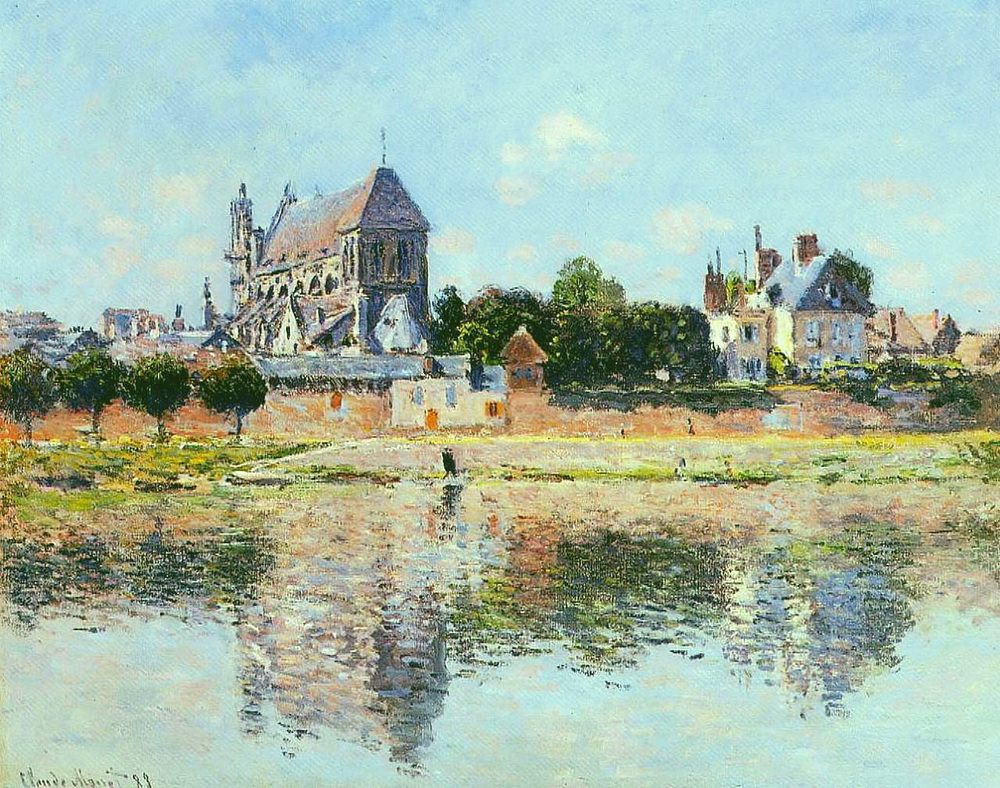
Original Size
(24)White Poppy, 1883, Private Collection. Impressionism.

(25)Villas at Bordighera 03, 1884. Impressionism.
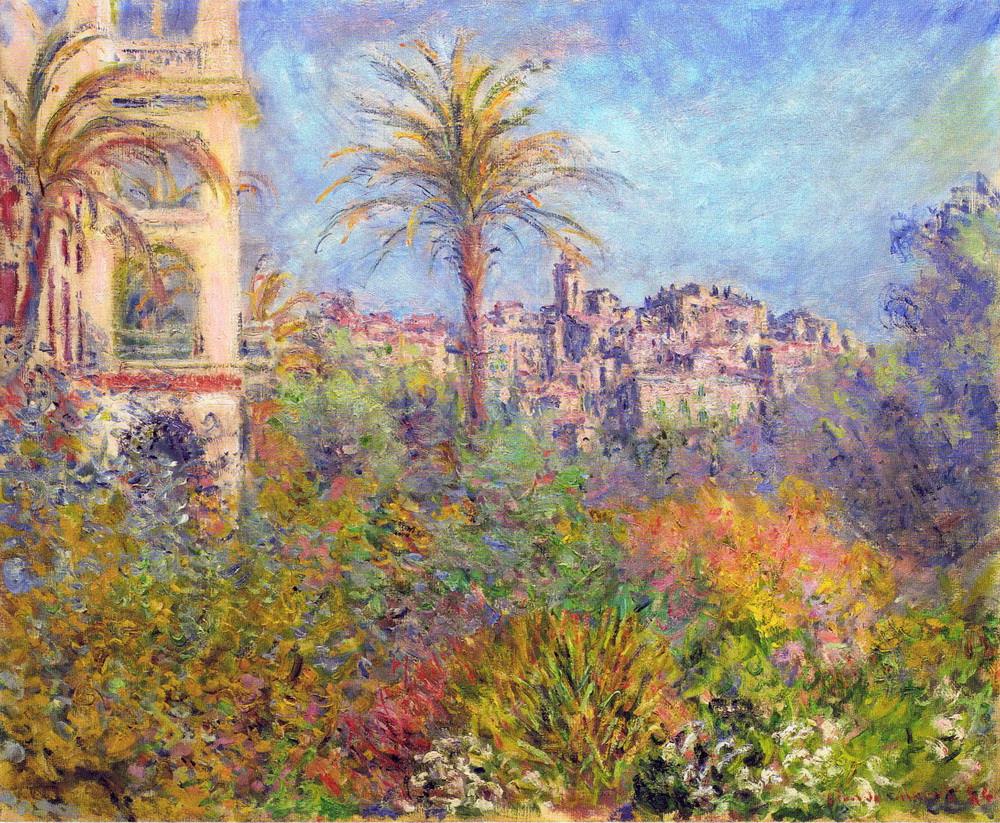
Original Size
(26)Etretat, Cliff of d`Aval, Sunset, 1885. Impressionism.
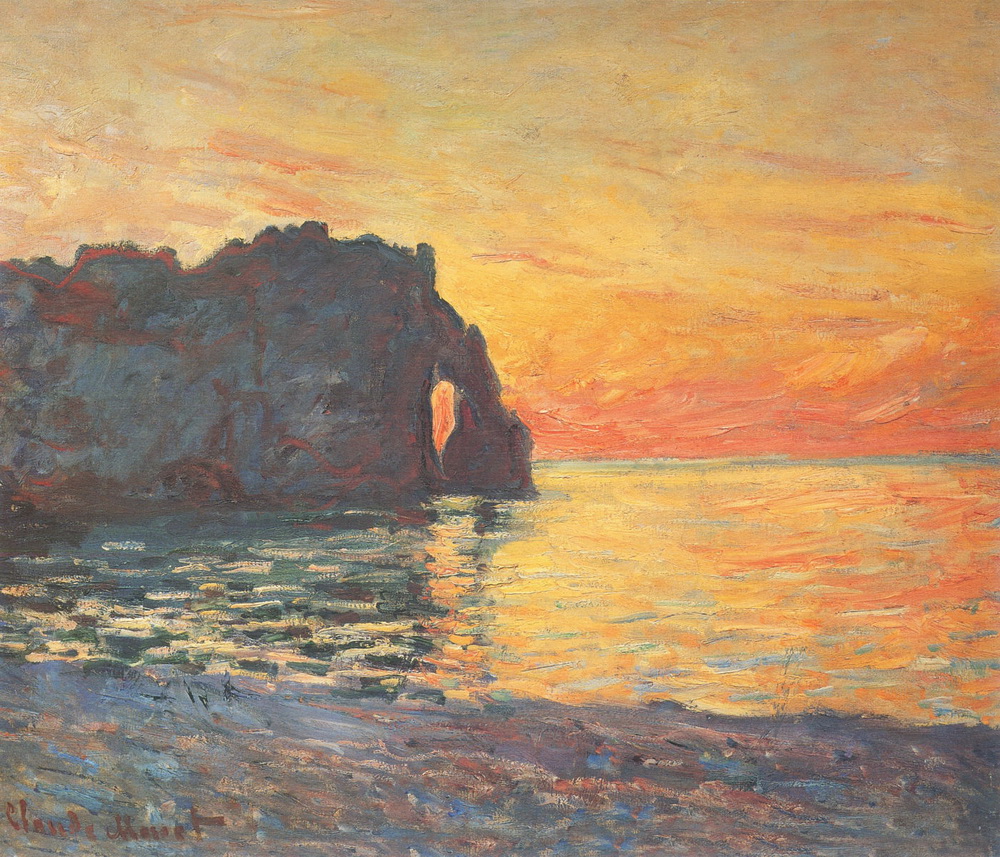
Original Size
(27)Etretat the Aval Door Fishing Boats Leaving the Harbour, 1885. Impressionism.

Original Size
(28)Road to Giverny in Winter, 1885. Impressionism.
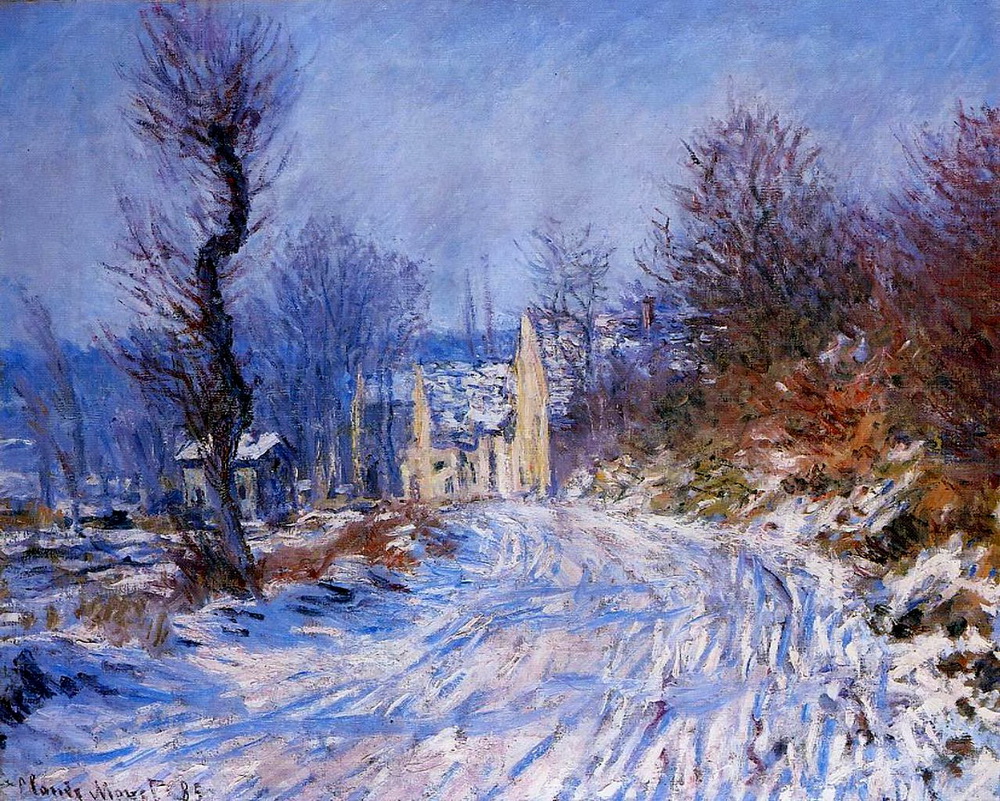
Original Size
(29)In The Woods At Giverny Blanche Hoschede, 1887. Impressionism.

(30)Haystacks. http://en.wikipedia.org/wiki/Haystacks_(Monet)
Wheatstacks (End of Summer), 1890-1891, Art Institute of Chicago.

Original Size
Grainstack at Sunset, 1891. Impressionism.
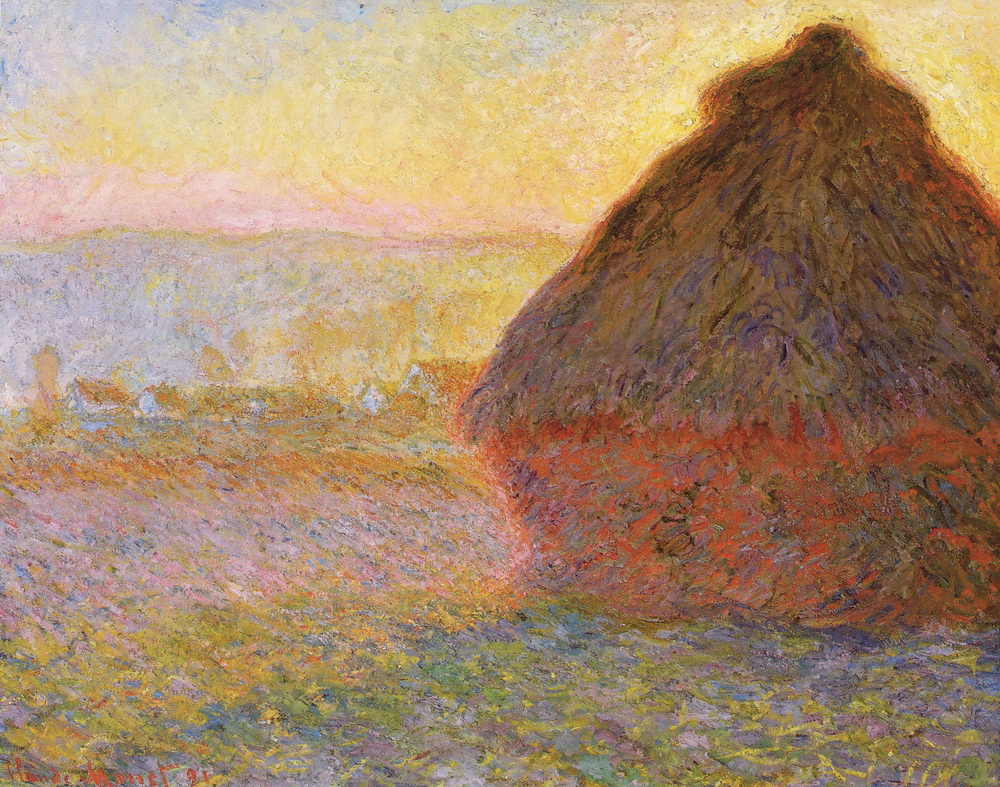
Original Size
Grainstack in Overcast Weather, Snow Effect, 1891. Impressionism.

Original Size
White Frost, Sunrise, 1888-1889. Hill-Stead Museum, Farmington, Connecticut.
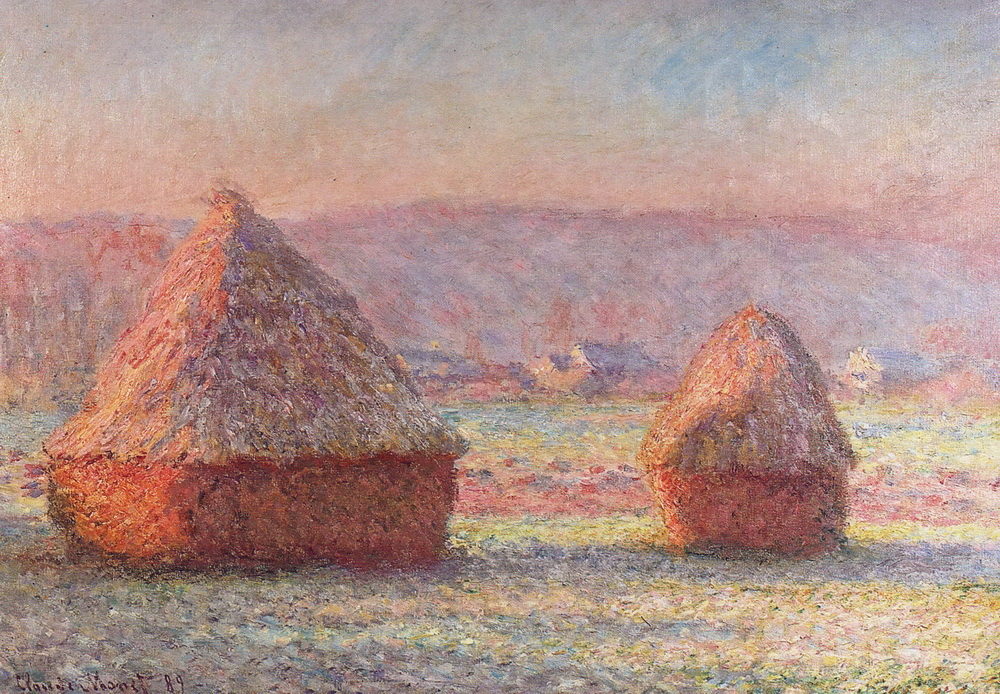
Original Size
Grainstacks, 1890. Impressionism.
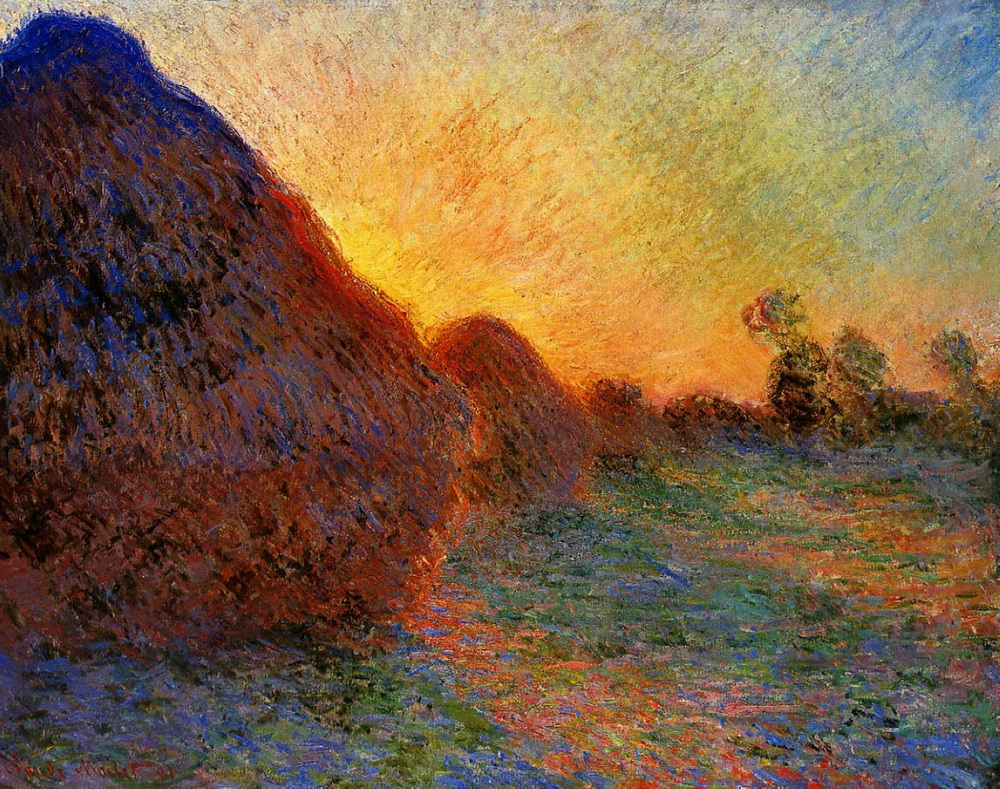
Original Size
Grainstack 2, 1891. Impressionism.
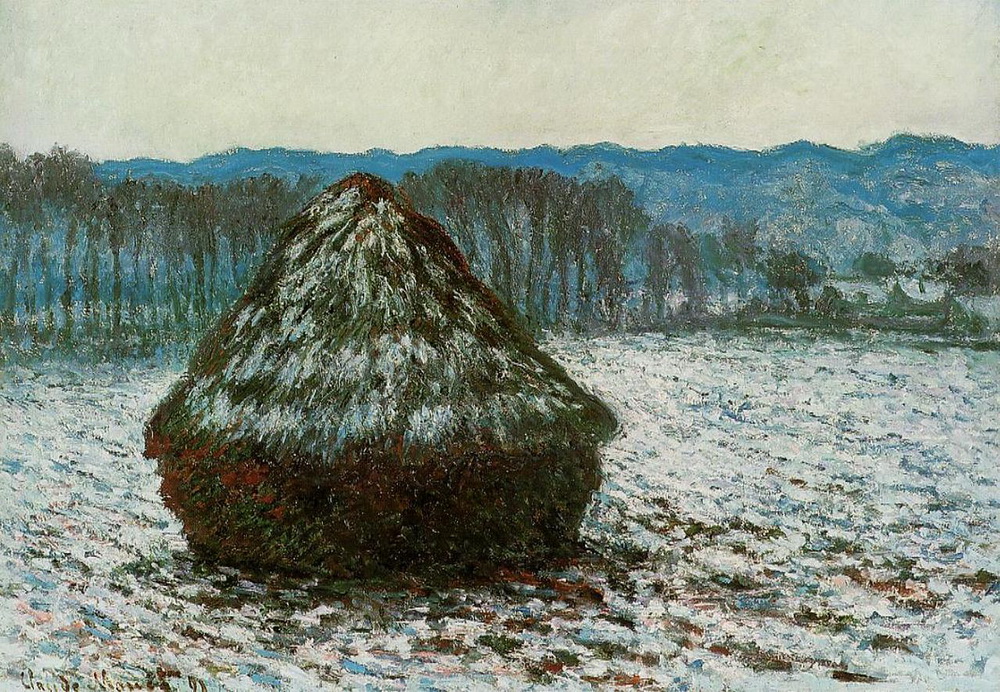
Original Size
(31)Madame Monet on the Divan. Impressionism.
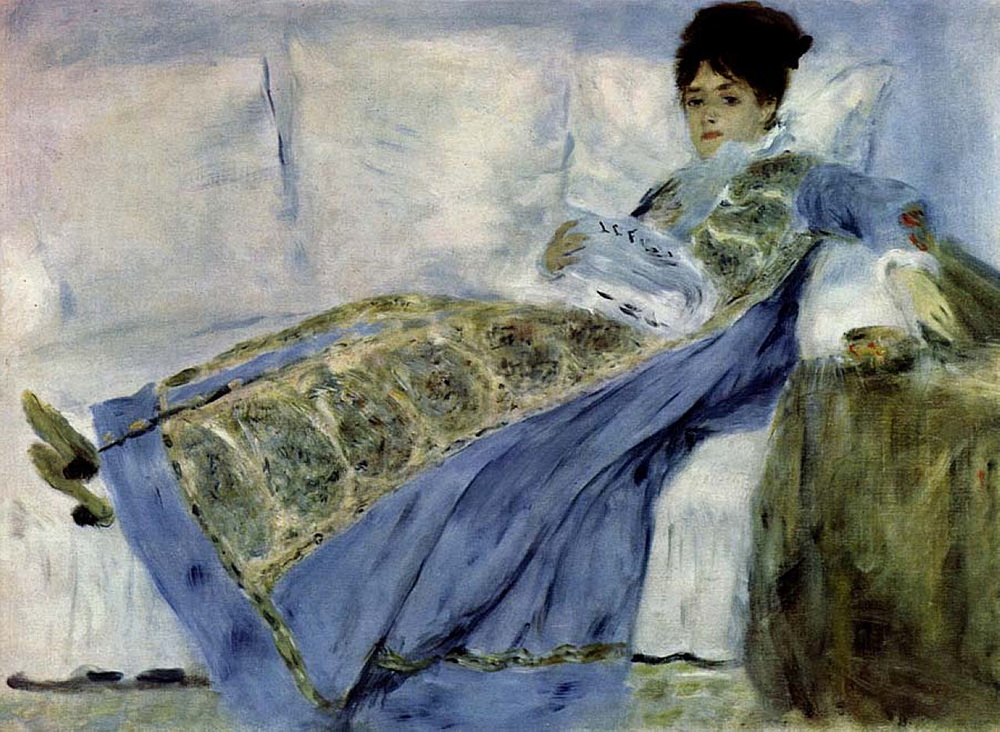
Original Size
(32)Snow Effect, The Road to Louveciennes. Impressionism.
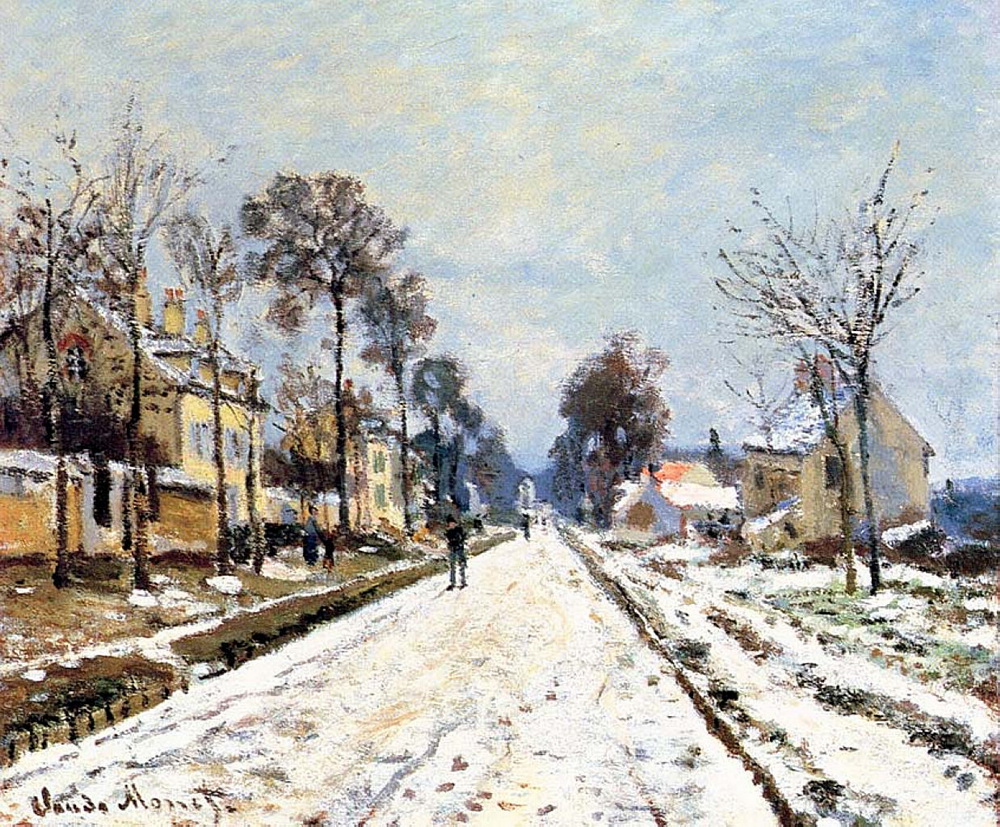
Original Size
(33)The Beach at Honfleux. Impressionism.
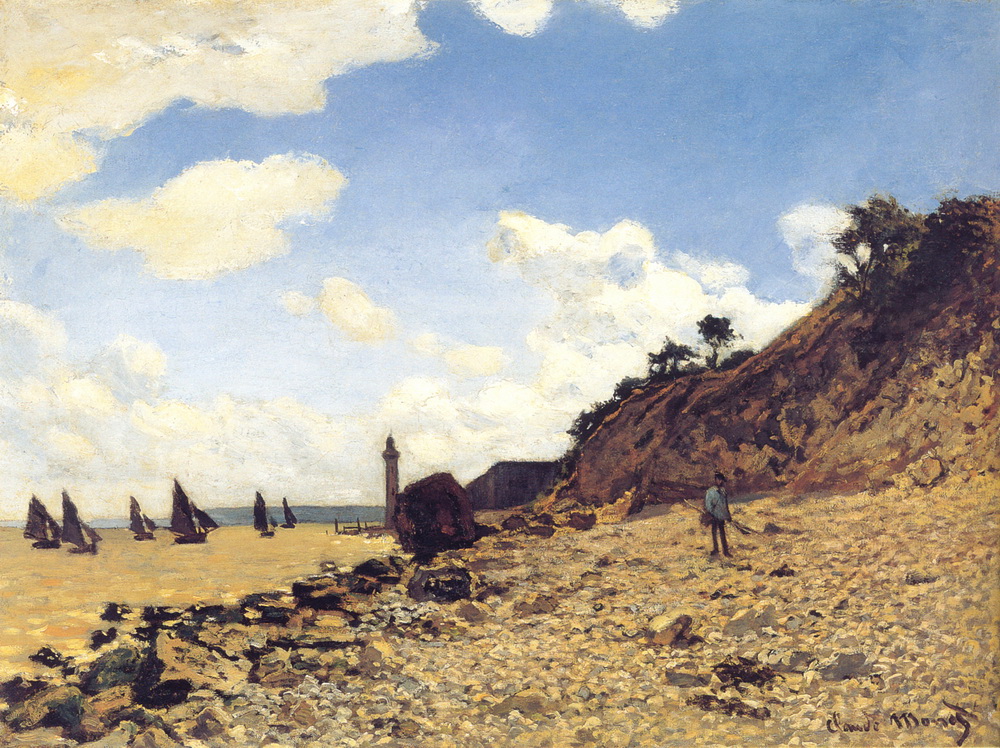
Original Size
(34)The Boardwalk at Trouville. Impressionism.
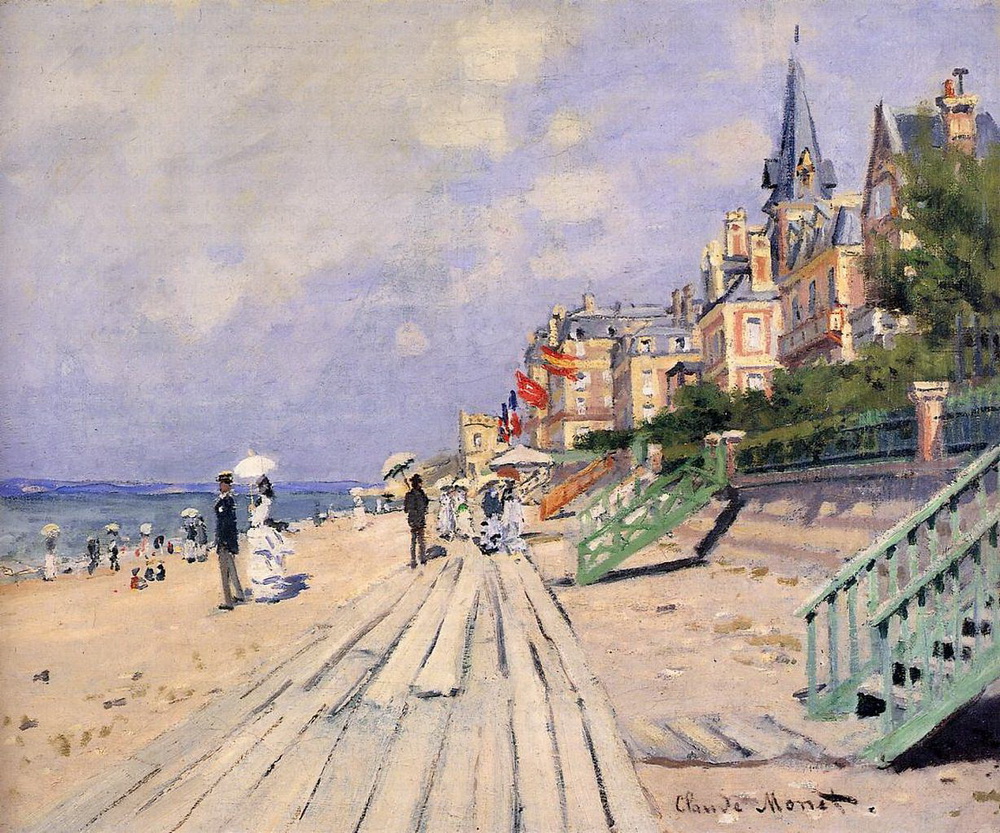
Original Size
(35)Rouen Cathedral. http://en.wikipedia.org/wiki/Rouen_Cathedral_(Monet)
Rouen Cathedral, Facade and Tour d&AlbaneI, 1894, Beyeler Foundation, Riehen, Switzerland.
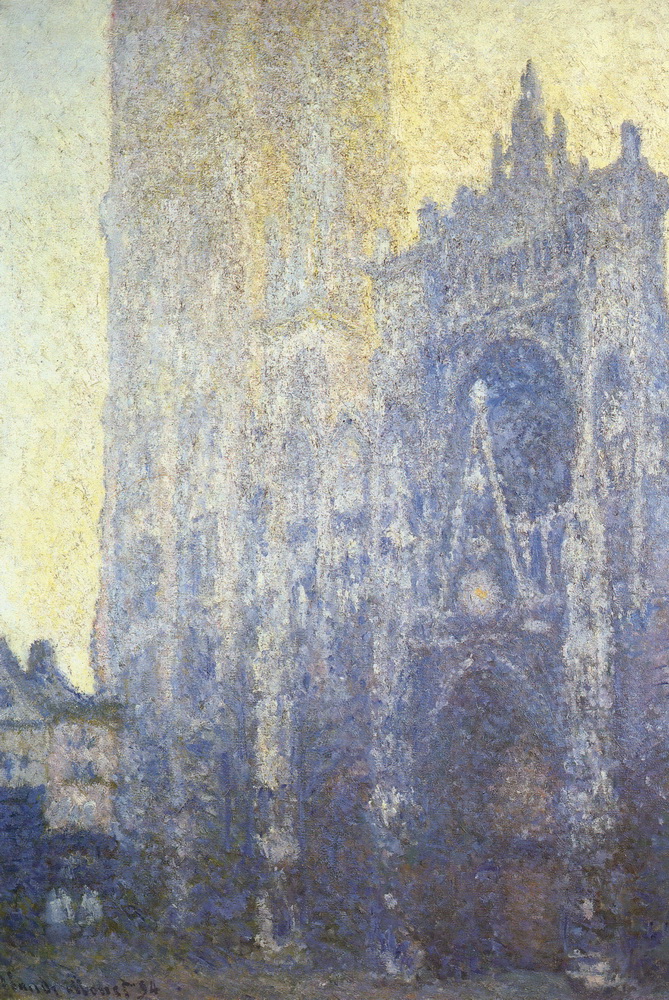
Original Size
Rouen Cathedral, Facade (Sunset), 1892-1894, Musée Marmottan Monet.

Original Size
Cathédrale de Rouen. Harmonie bleue et or, 1892-1893, Musée d&Orsay, Paris, France.

Original Size
Rouen Cathedral, Facade, 1892-1894, Pola Museum of Art, Hakone.

Original Size
(36)Poplar. http://en.wikipedia.org/wiki/Poplar_Series_(Monet)
Poplars (Autumn), 1891, Private collection.
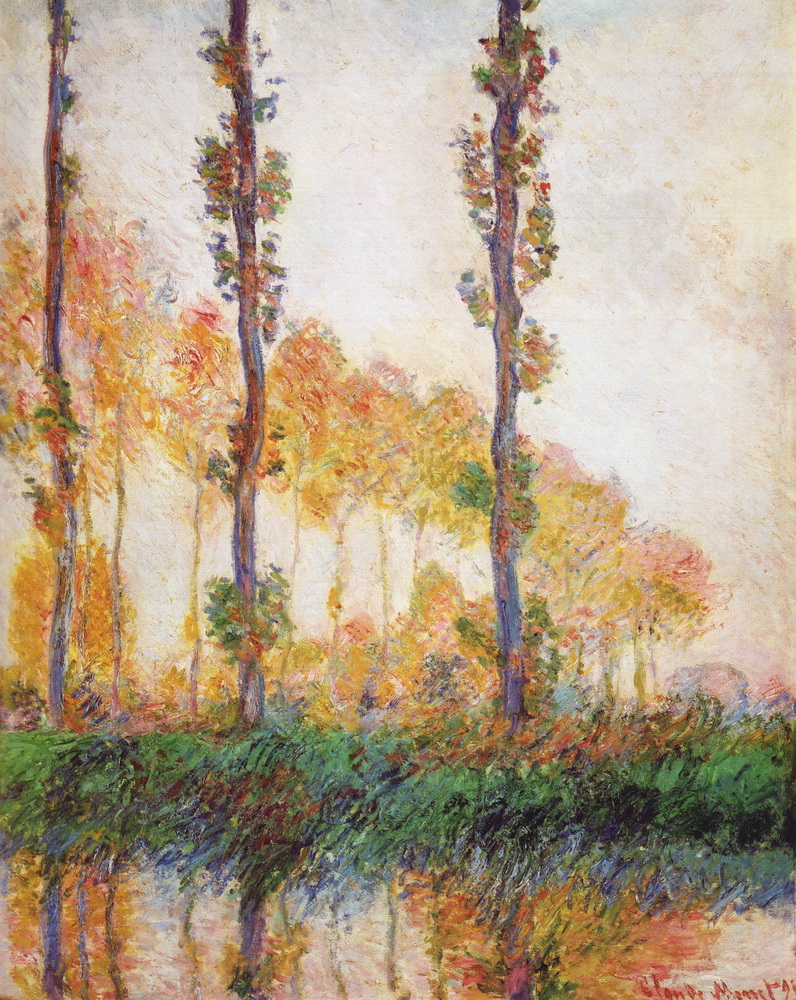
Original Size
Poplars (Wind effect), 1891, Private collection.
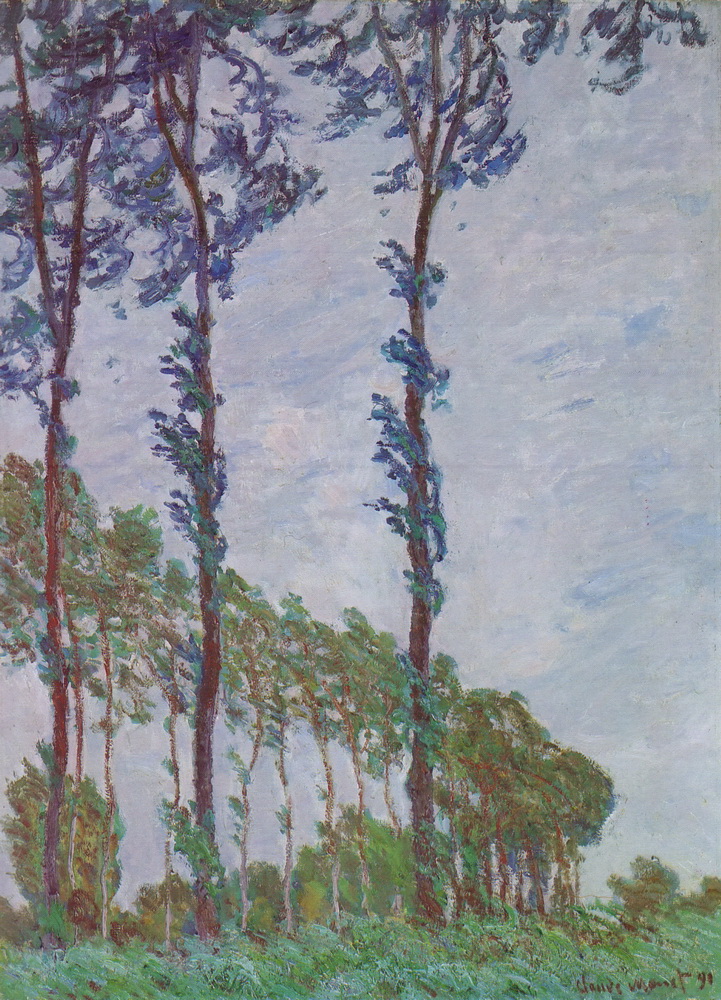
Original Size
Three Poplar Trees in the Autumn, 1891, Philadelphia Museum of Art, Philadelphia, Pennsylvania, USA.
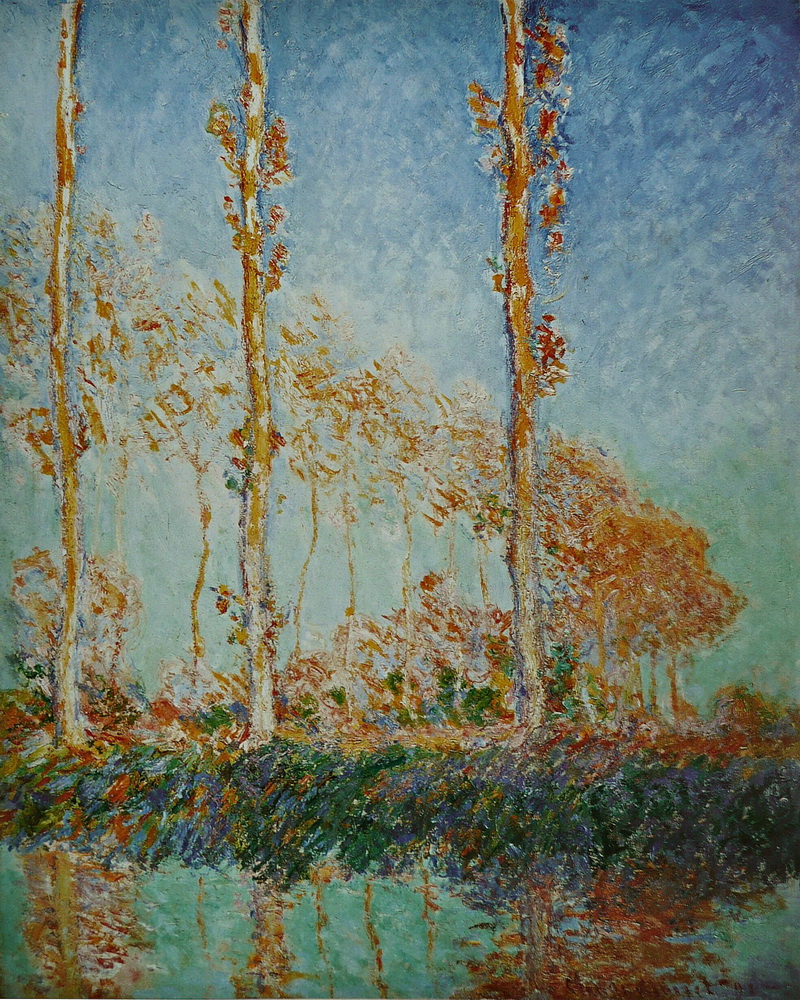
Original Size
Poplars on the River Epte, from 1890 until 1891, Tate Britain.
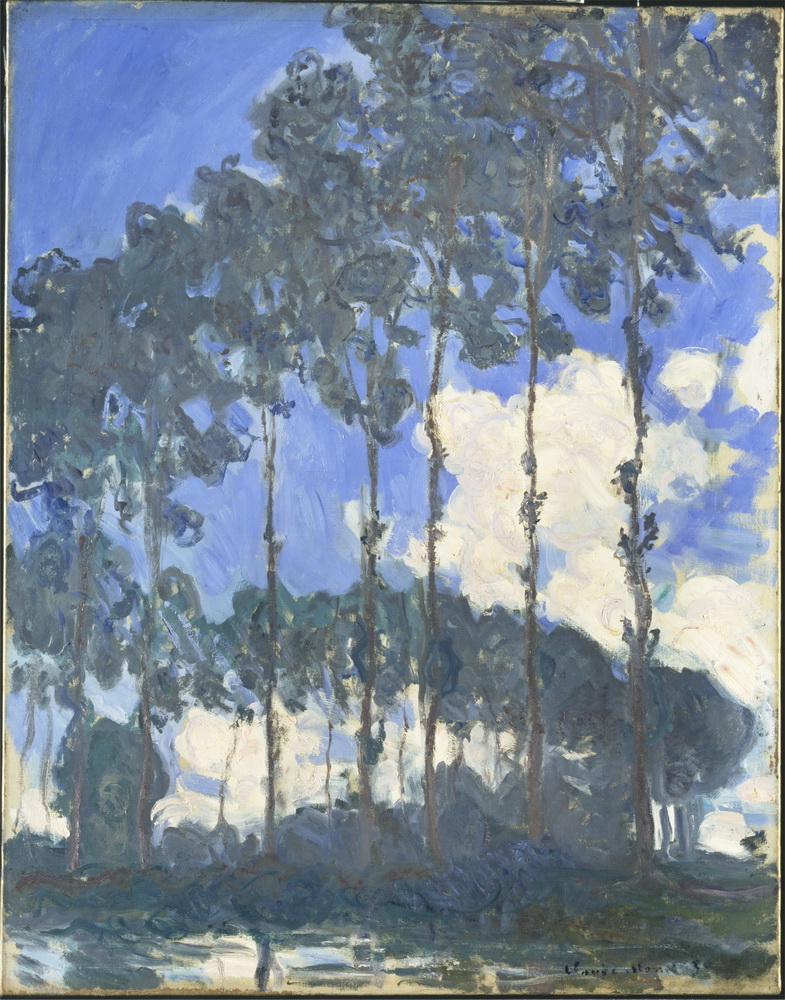
Original Size
(37)Houses of Parliament. http://en.wikipedia.org/wiki/London_Parliament_(Monet)
London, Houses of Parliament. The Sun Shining through the Fog, 1904, Musée d&Orsay.

Original Size
Houses of Parliament, stormy sky, 1904, Palais des Beaux-Arts de Lille, Lille.
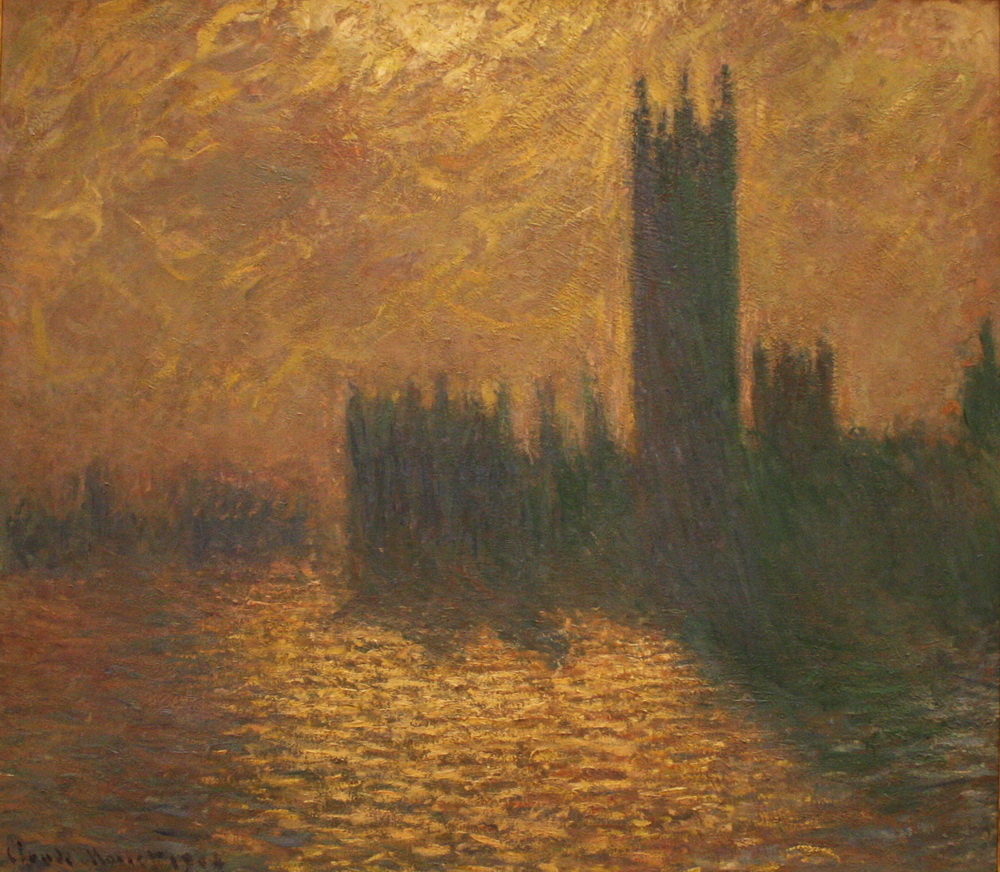
Original Size
(38)Water Lilies. http://en.wikipedia.org/wiki/Water_Lilies
Water Lilies, 1920-1926, Musée de l&Orangerie.
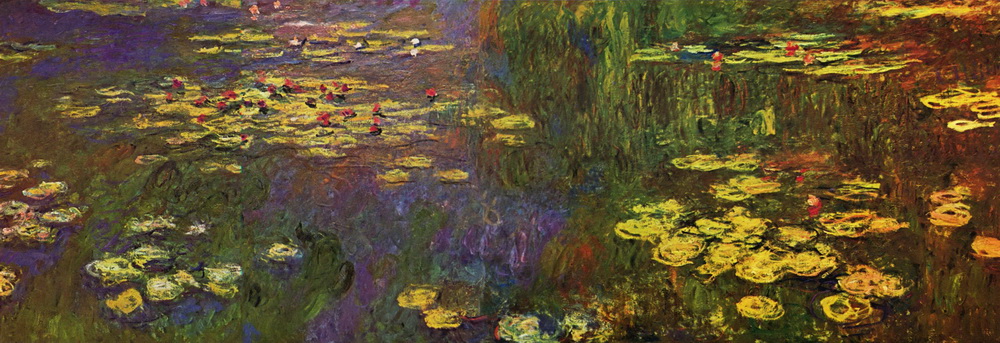
Original Size
Water Lilies, 1917-1919, Honolulu Museum of Art.
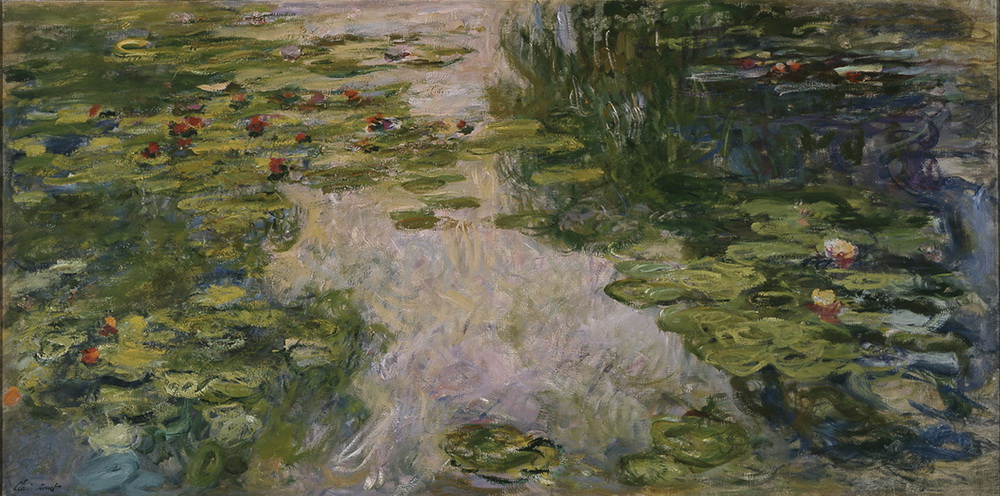
Original Size
Nympheas, 1915, Musée Marmottan Monet, Paris.
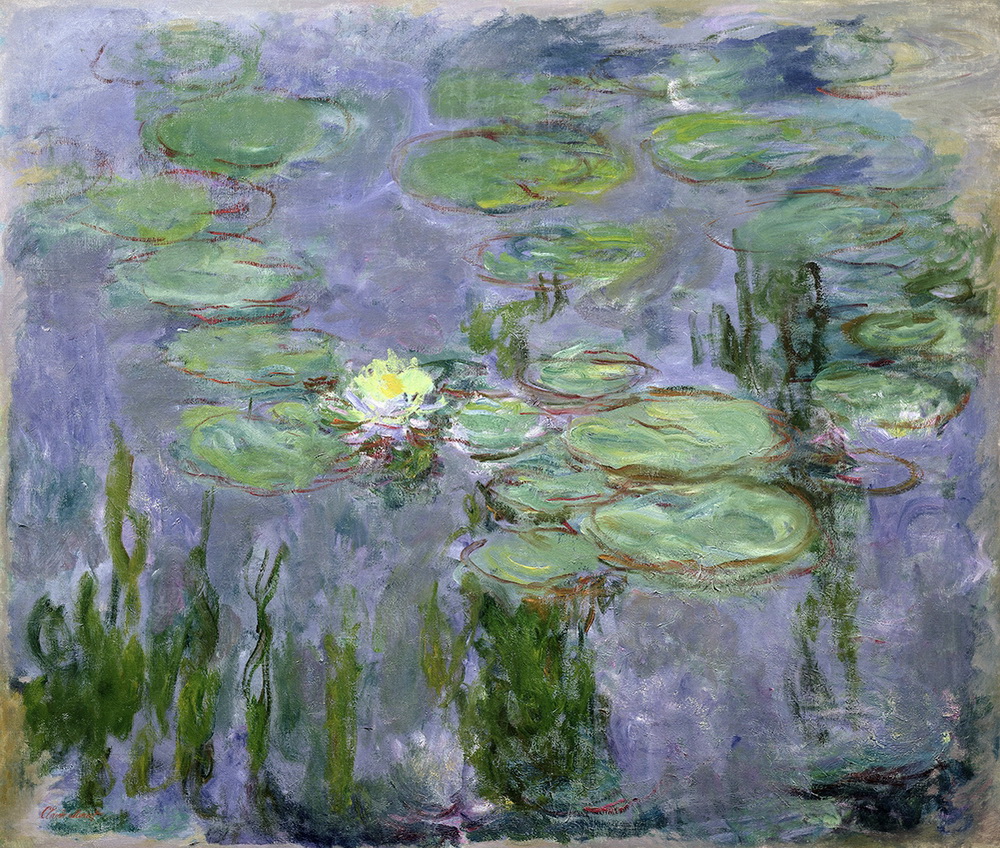
Original Size
Water-Lilies, 1914-1917, Toledo Museum of Art.
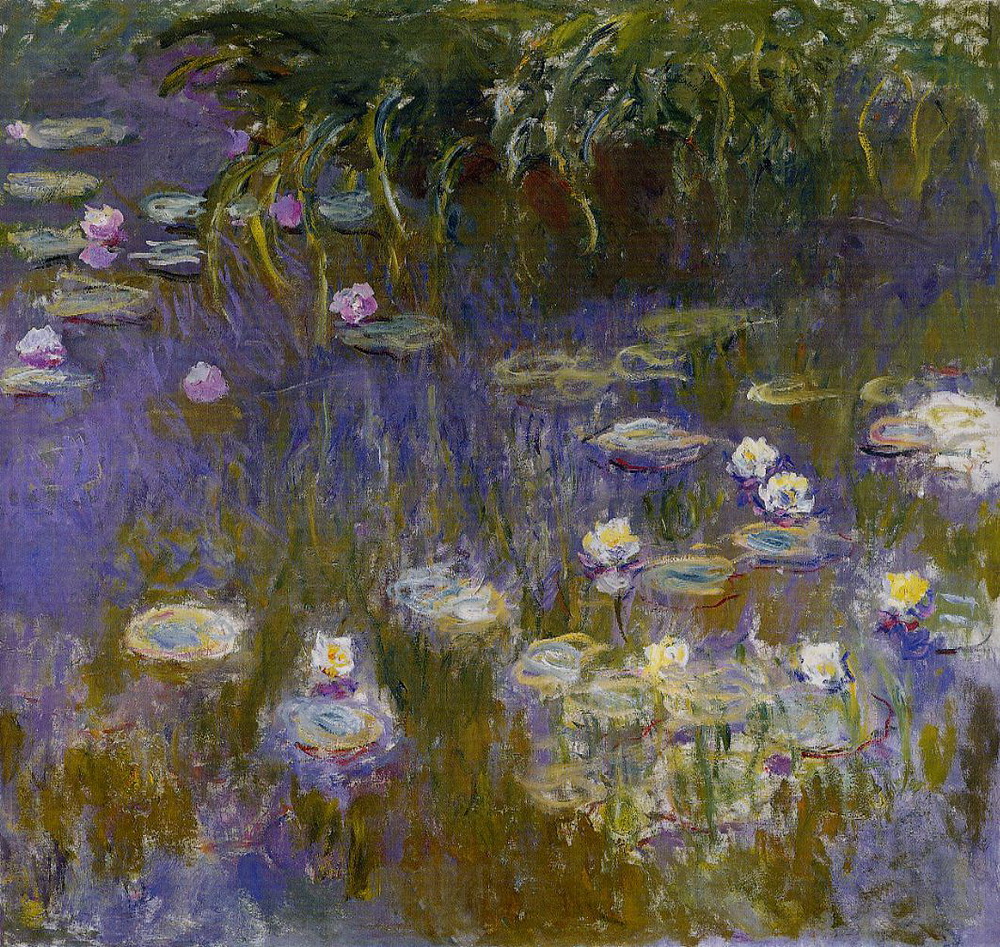
Original Size
Weiße und gelbe Seerosen, 1915-1917, Kunstmuseum Winterthur.

Original Size
Water-Lilies, 1908, Dallas Museum of Art, Dallas, Texas.
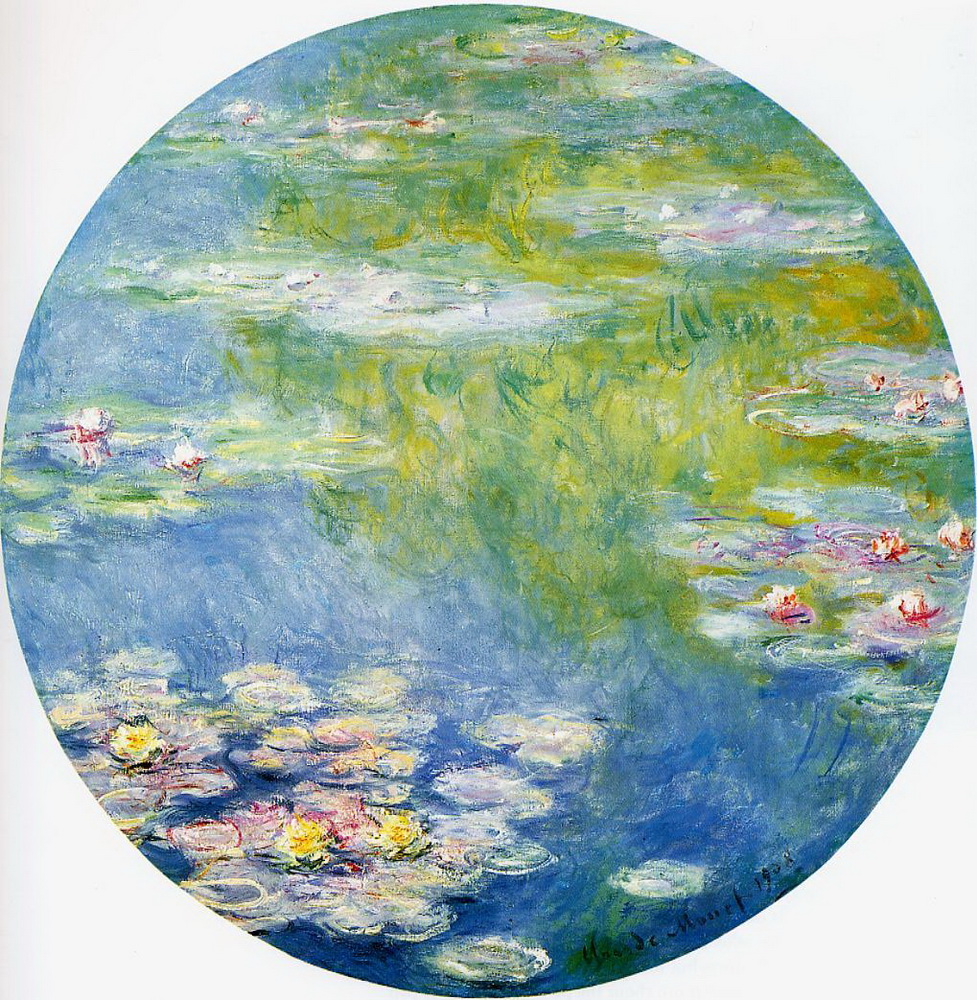
Original Size
1920, Folkwang Museum, Essen. http://www.museum-folkwang.de/
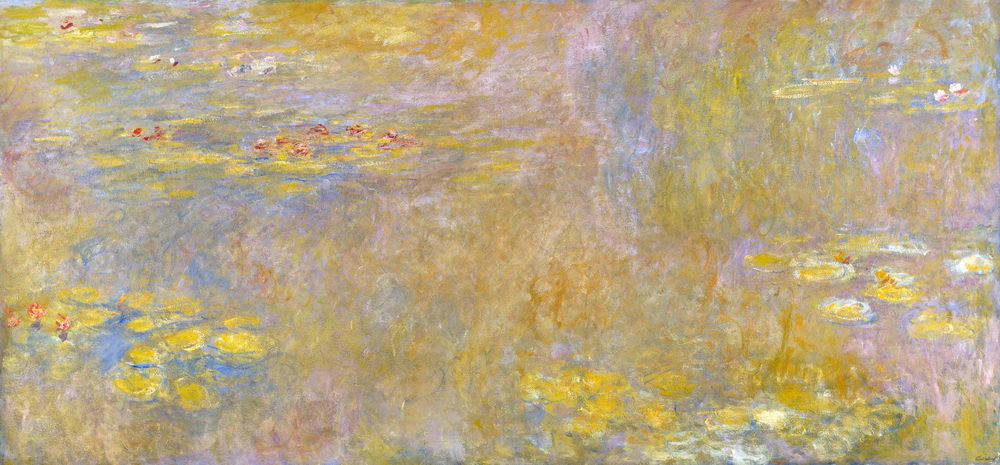
Original Size
Nymphéas, reflets de saule, 1916-1919, Musée Marmottan Monet, Paris.
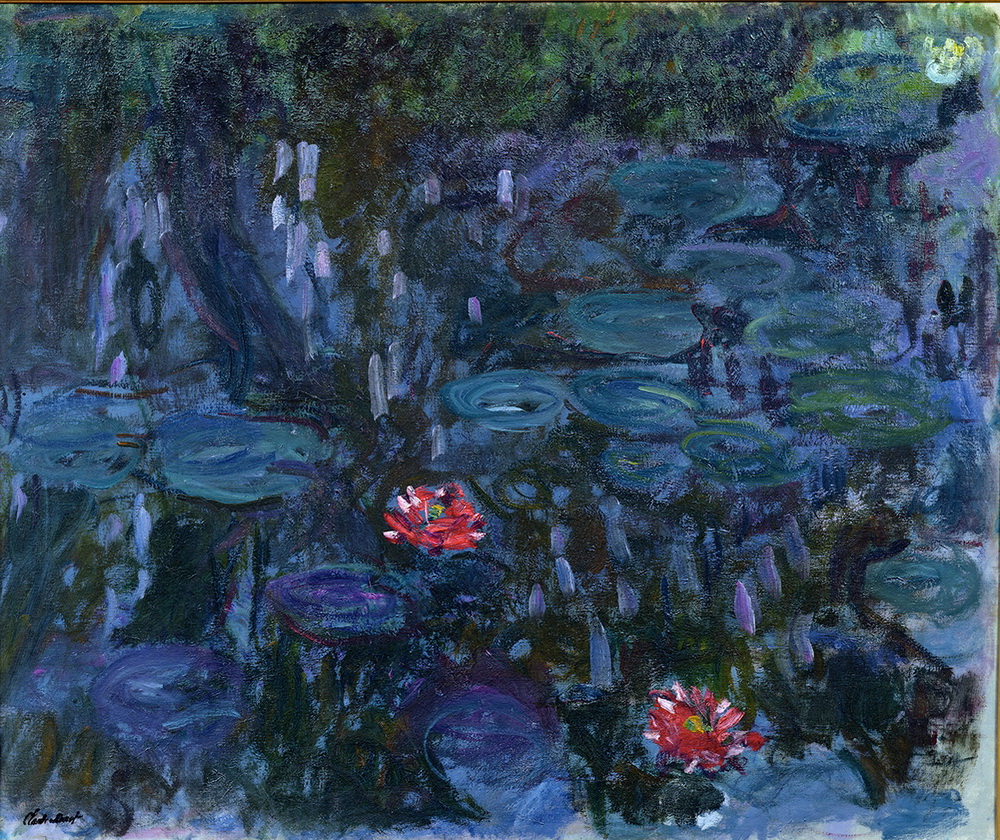
Original Size
(39)The Japanese Footbridge.
The Water-Lily Pond (also known as Japanese Bridge), 1900, Museum of Fine Arts, Boston.
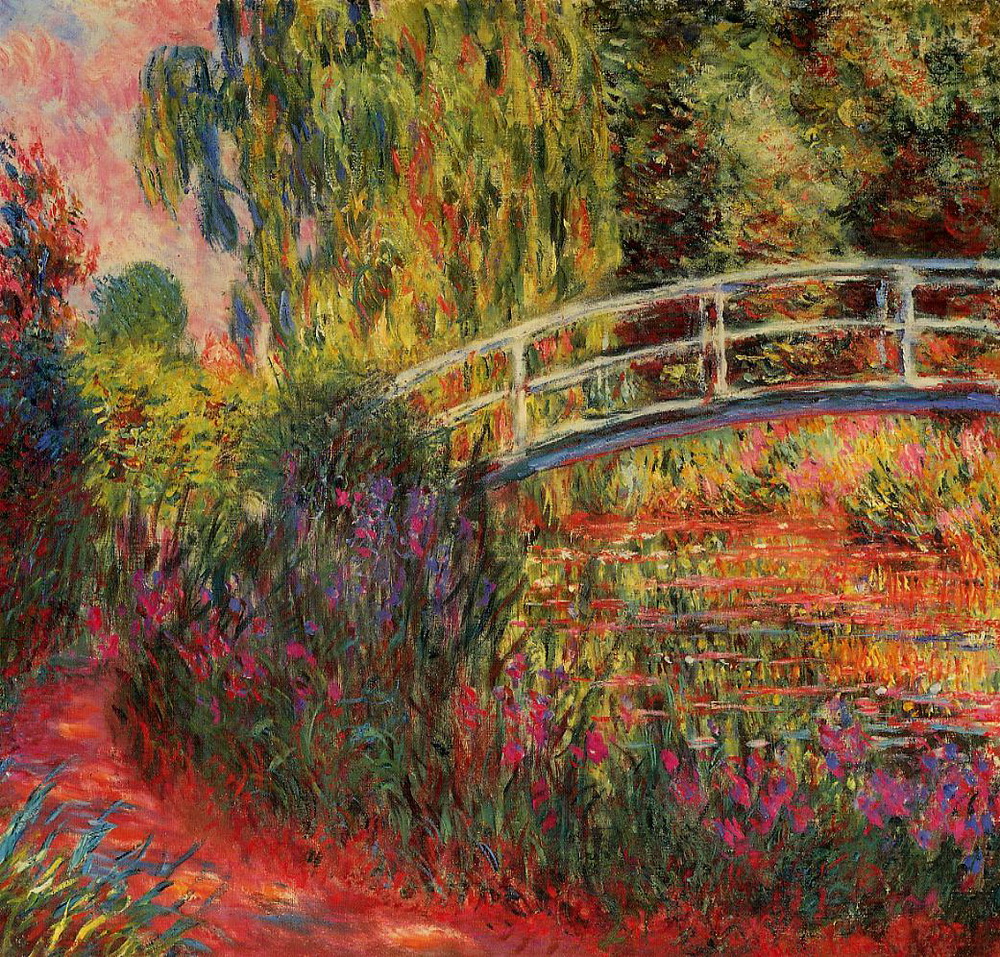
Original Size
Japanese bridge in Giverny, 1900, Art institute, Chicago, USA.
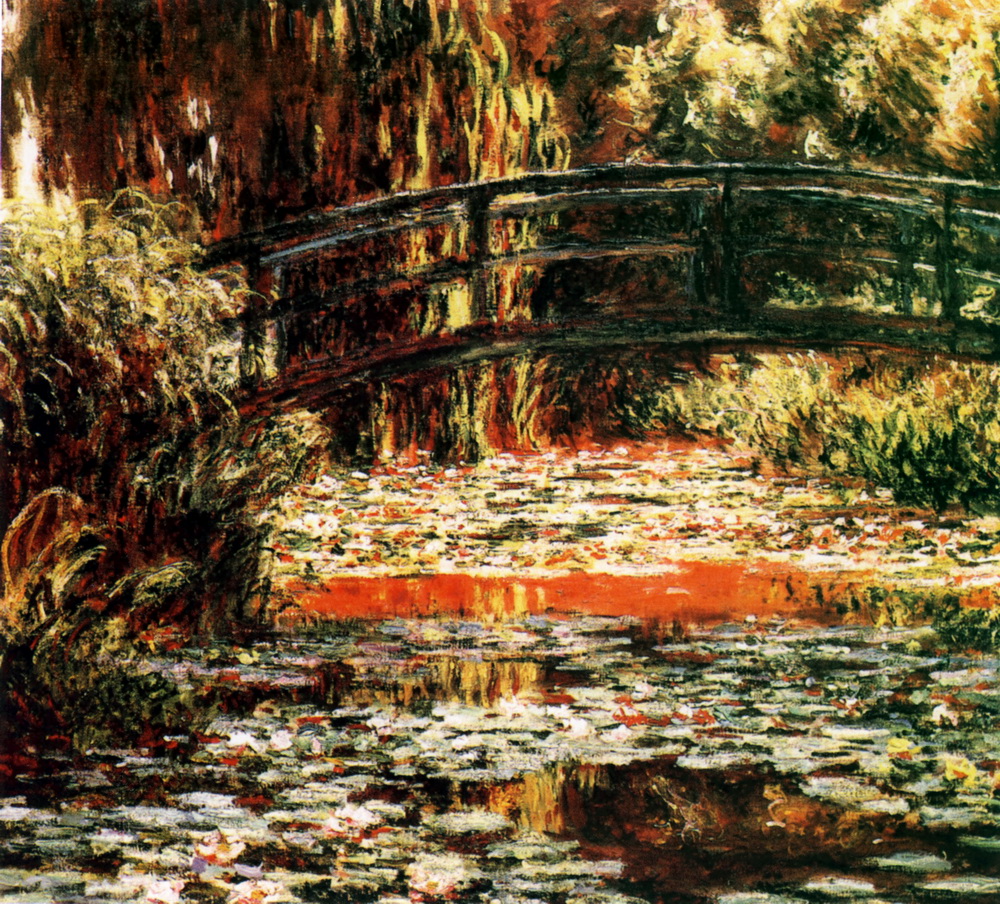
Original Size
The Water-Lily Pond (also known as Japanese Bridge), 1899, Metropolitan Museum of Art.
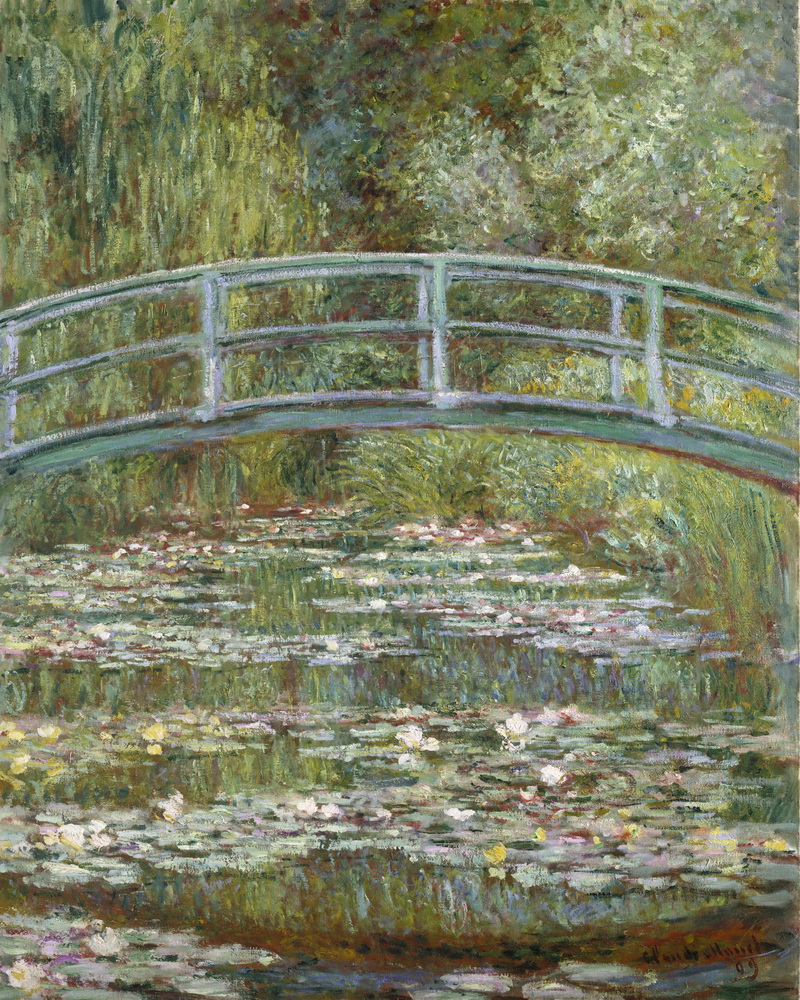
Original Size
Water Lilies and Japanese Bridge, 1897-1899, Princeton University Art Museum.
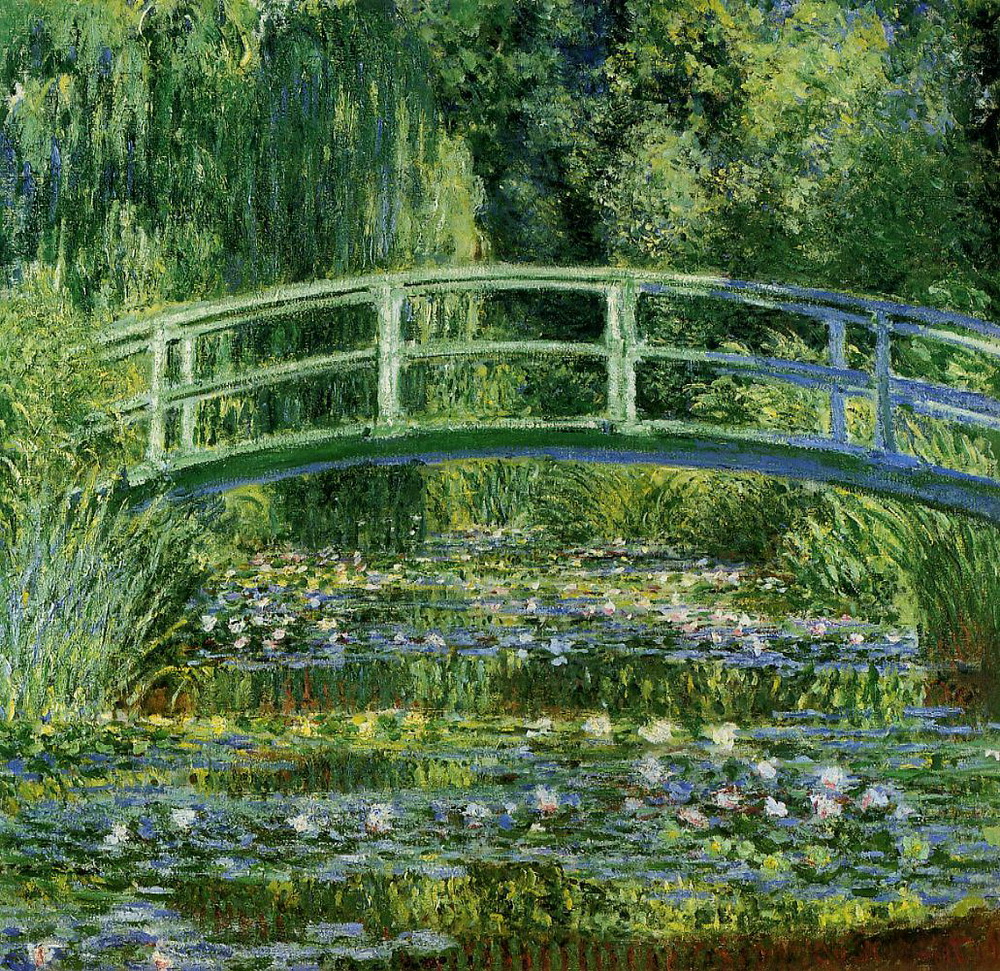
Original Size
The Japanese Footbridge, 1920-1922, Museum of Modern Art.
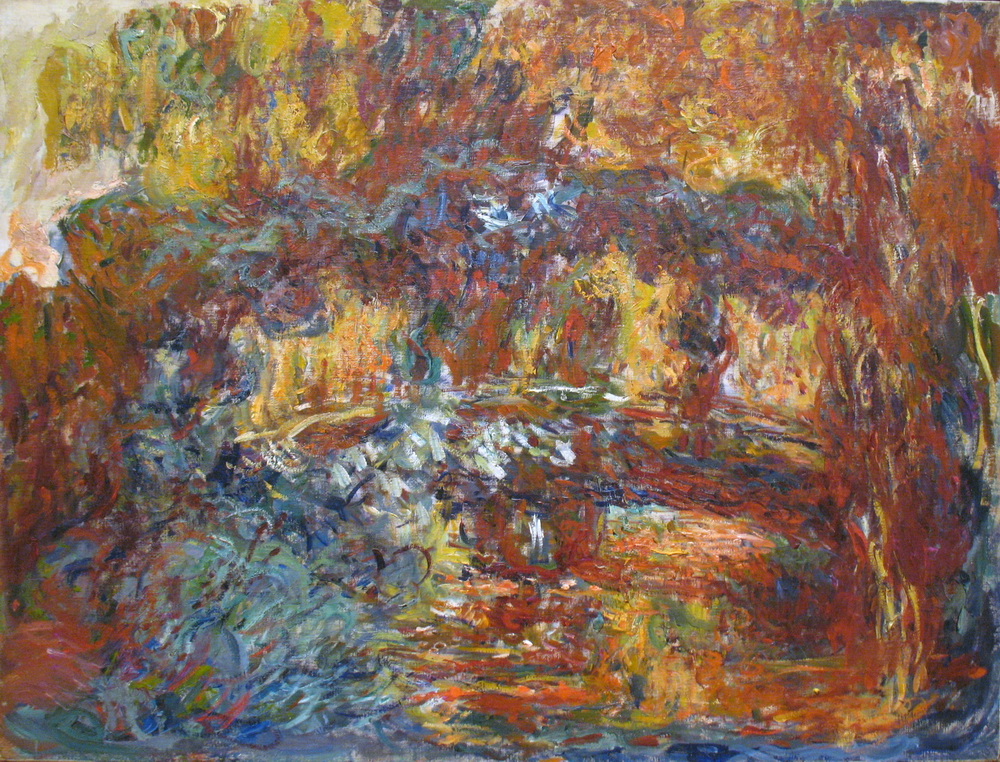
Original Size
(40)The Promenade, Woman with a Parasol, 1875. Impressionism.
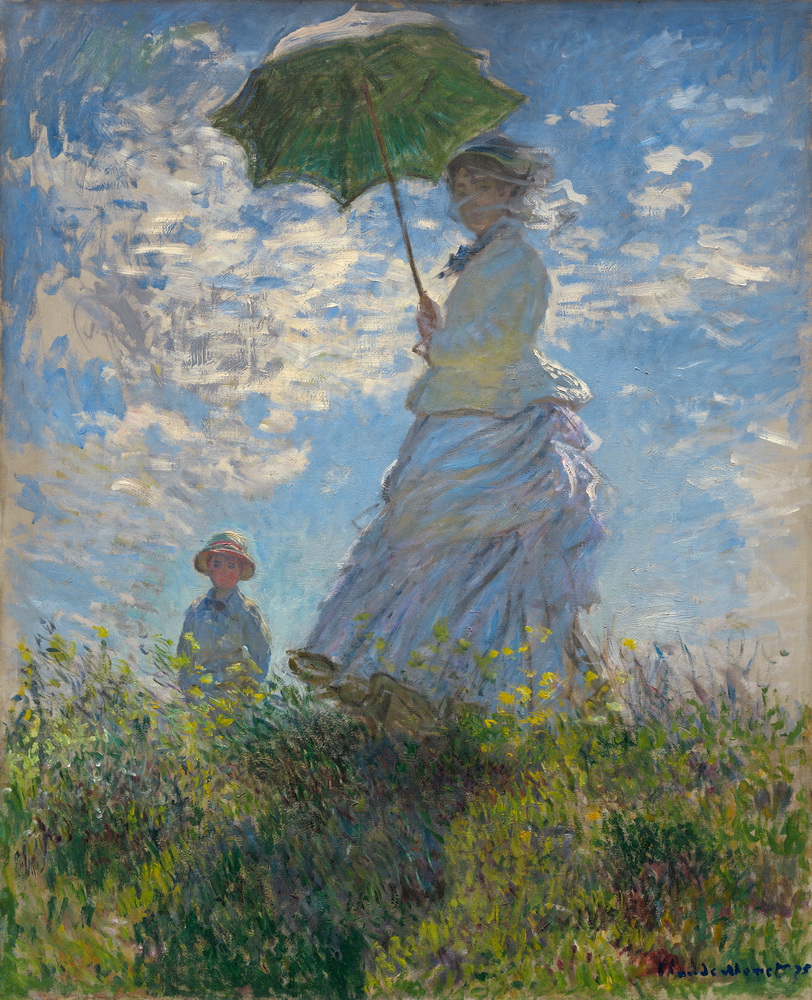
Original Size
(41)Woman with a Parasol (also known as Study of a Figure Outdoors (Facing Left)), 1886. Impressionism.
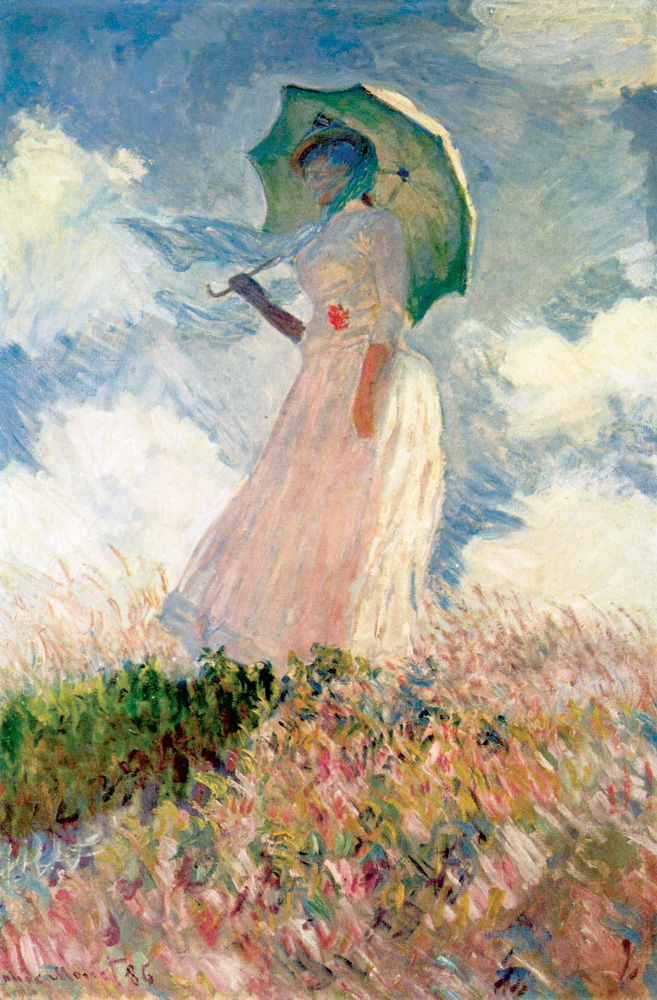
Original Size
(42)Woman with a Parasol, Facing Right (also known as Study of a Figure Outdoors (Facing Right)), 1886. Impressionism.
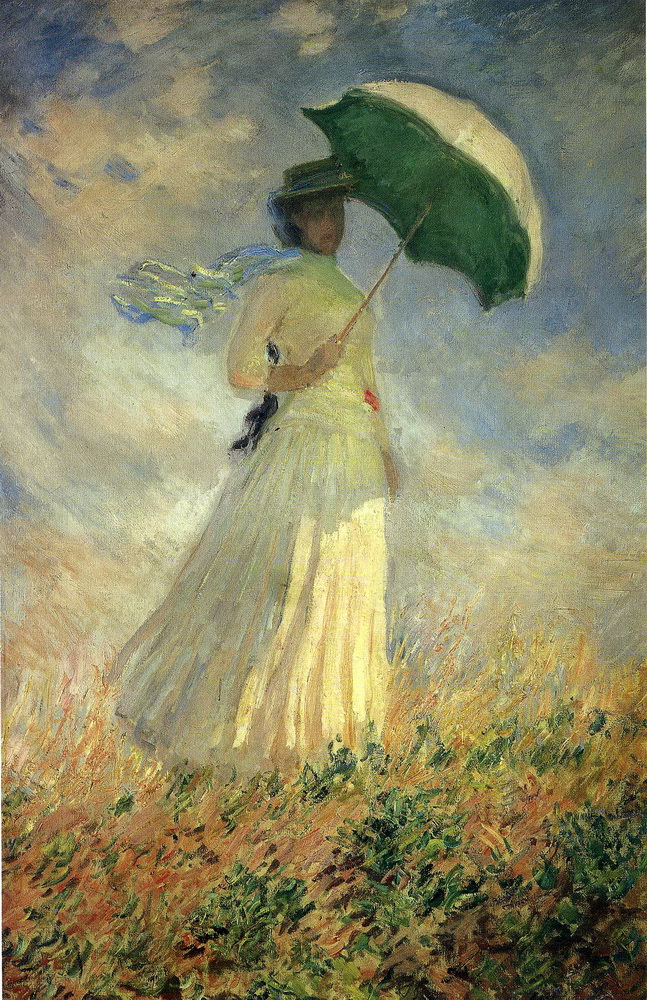
Original Size
(43)Pathway in Monet&s Garden at Giverny, Start Date: 1901, Completion Date: 1902. Impressionism.
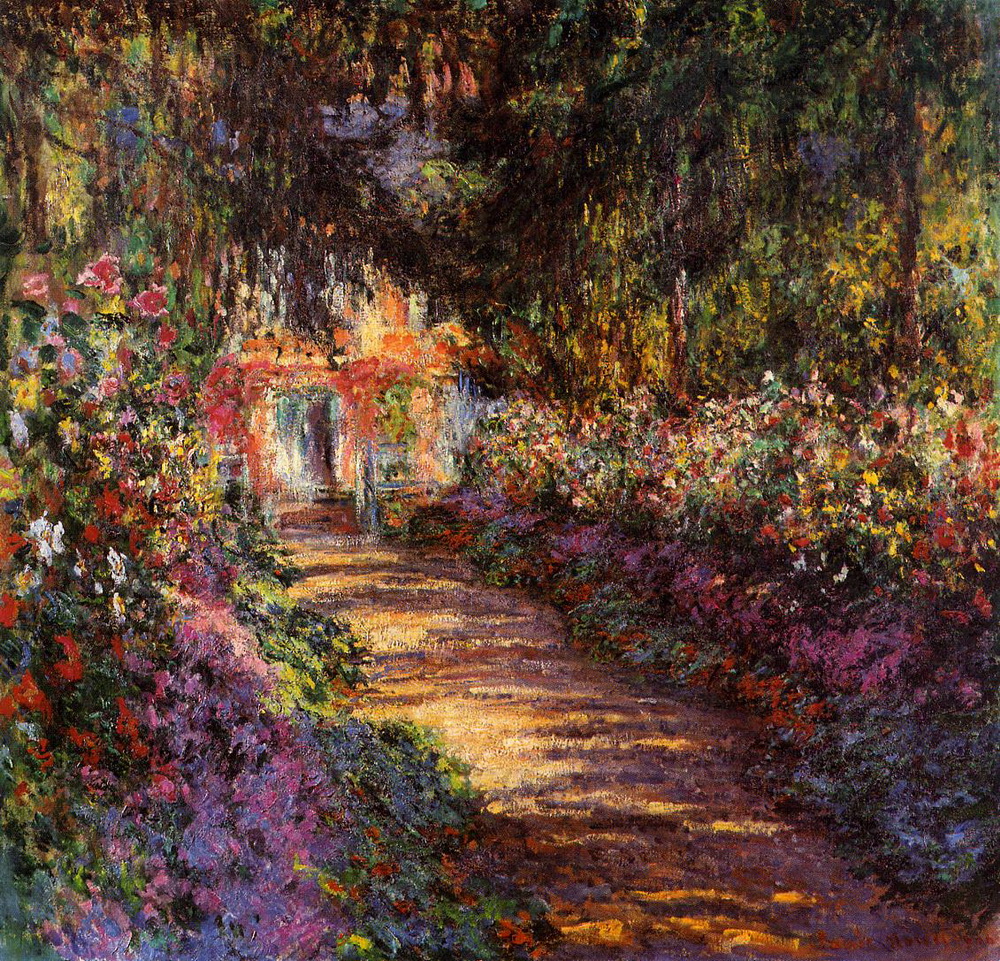
Original Size
(44)The Seine at Bougival in the Evening. Impressionism.
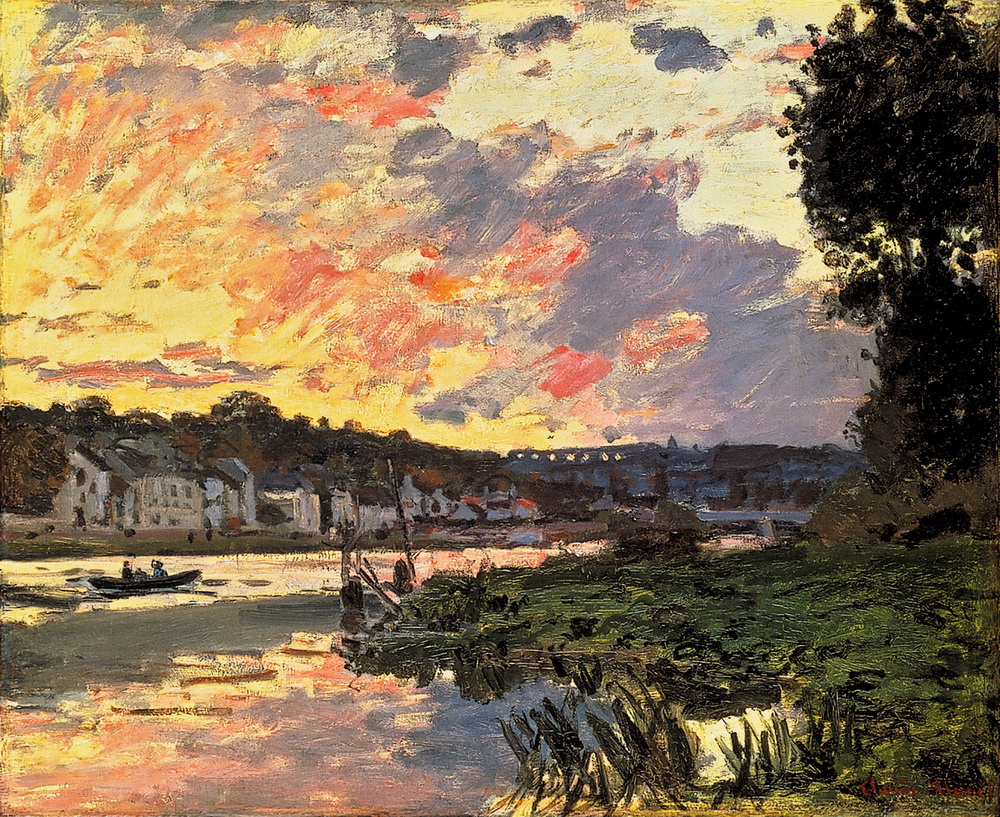
Original Size


